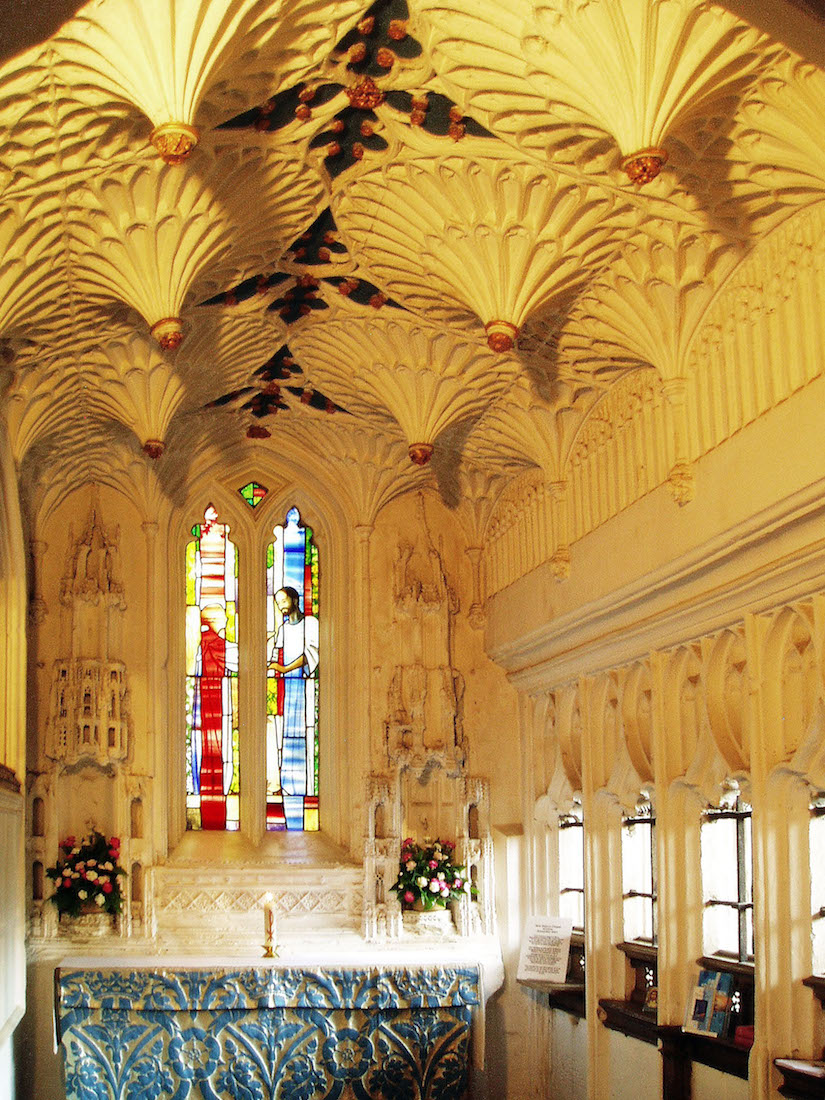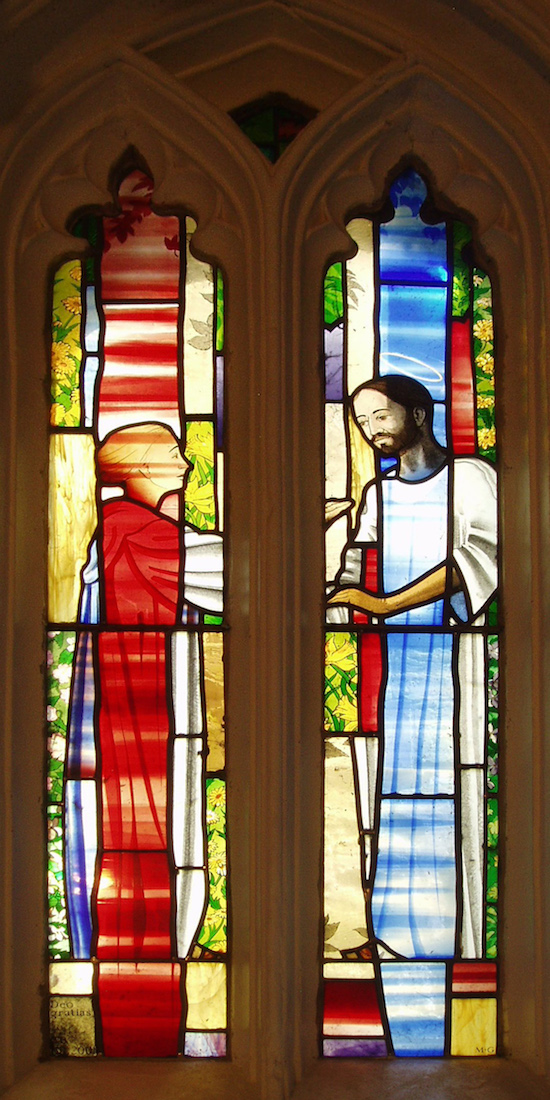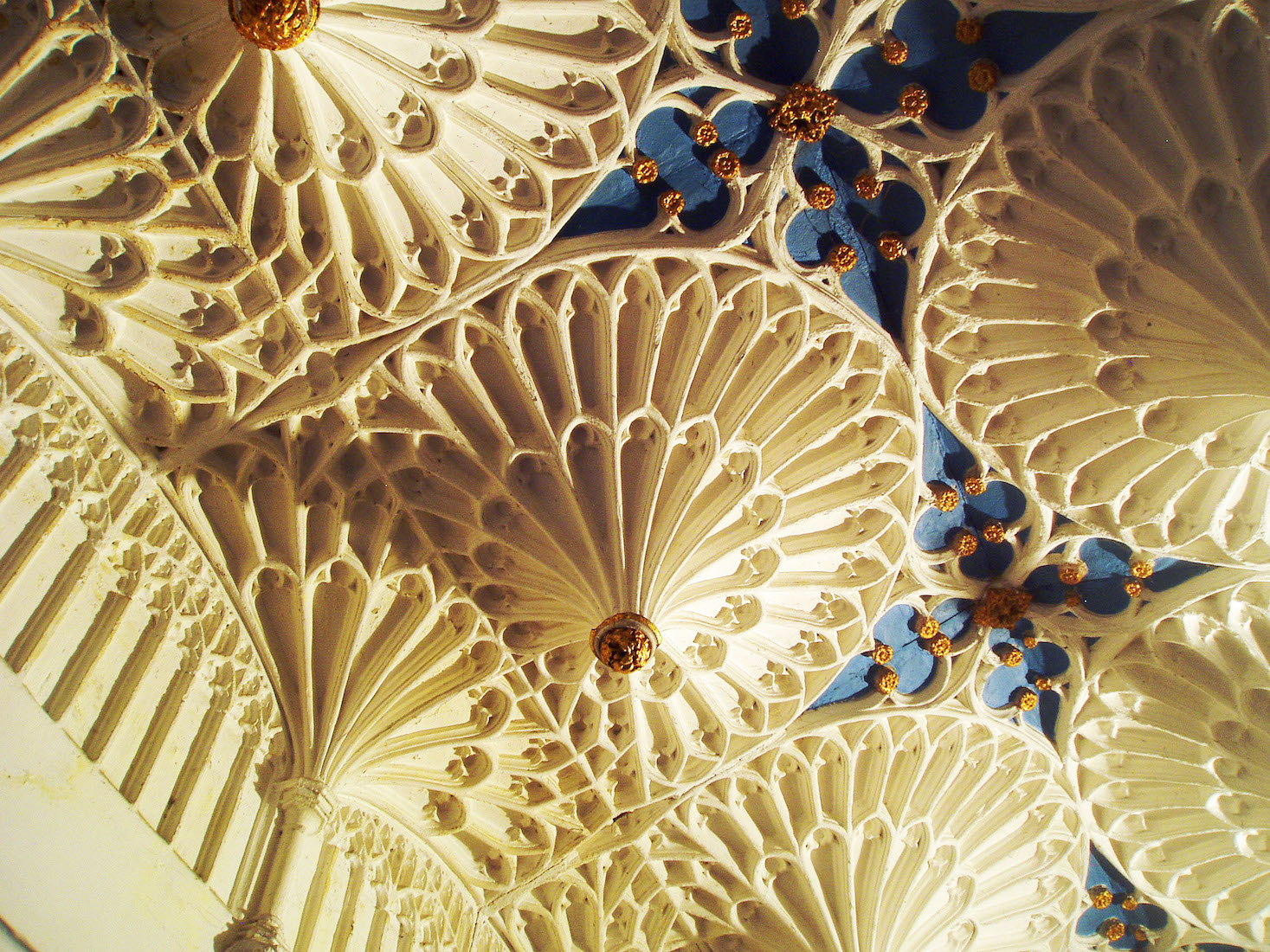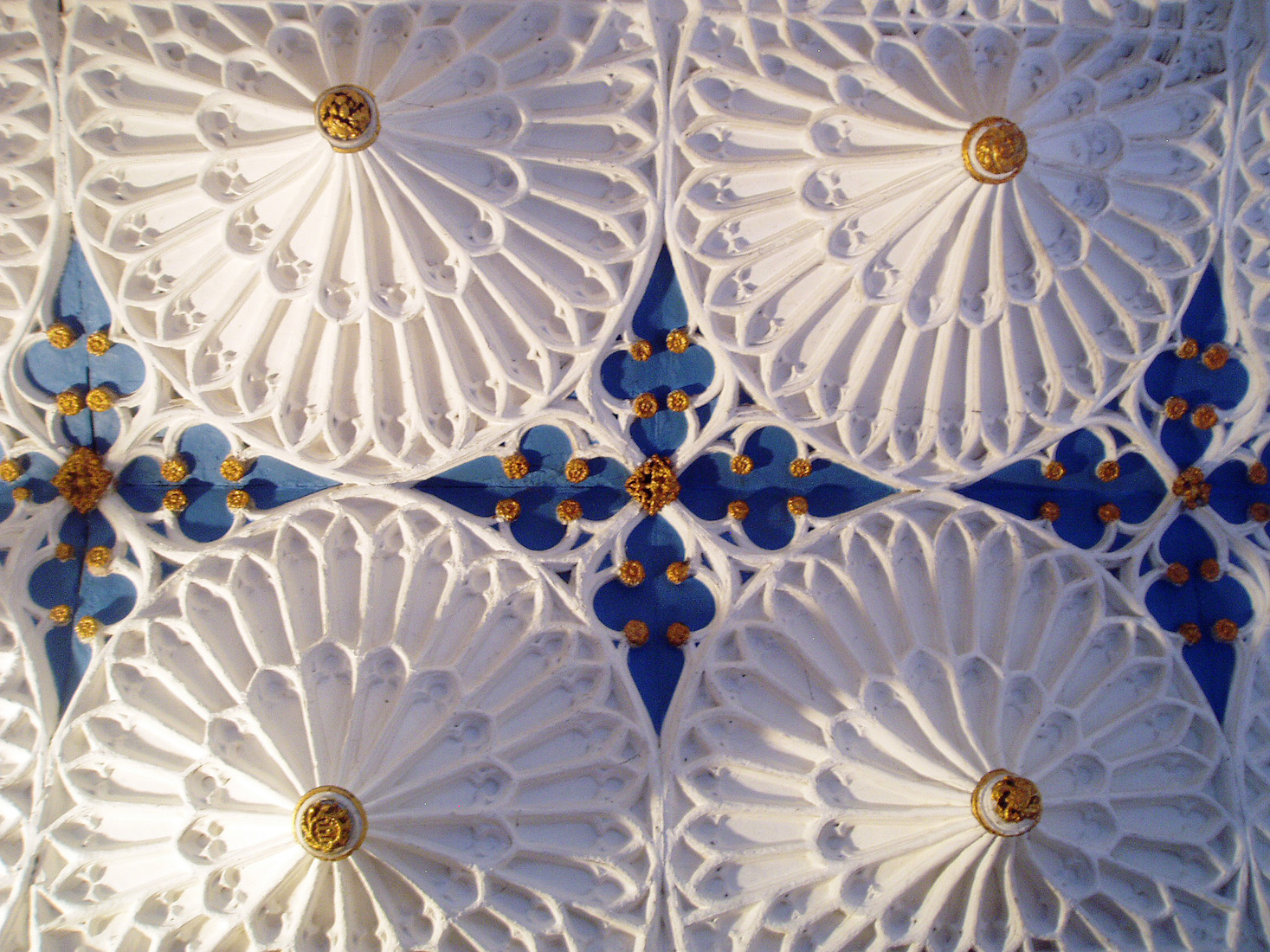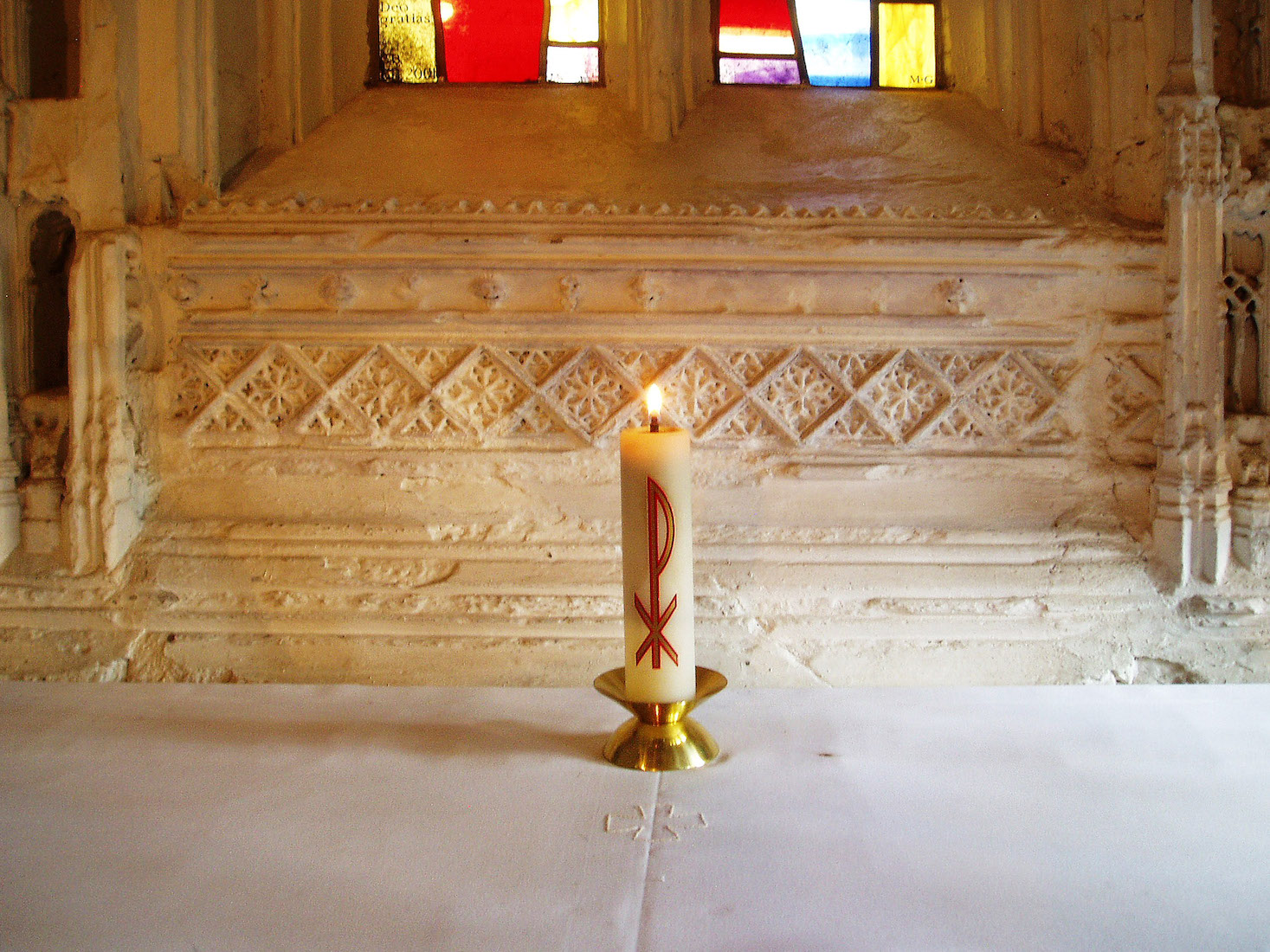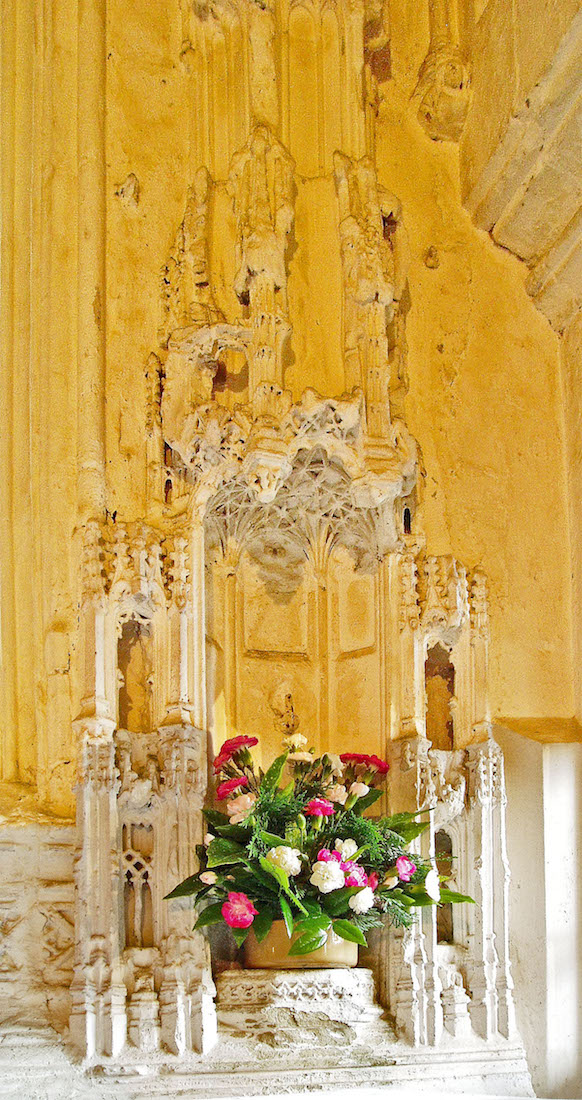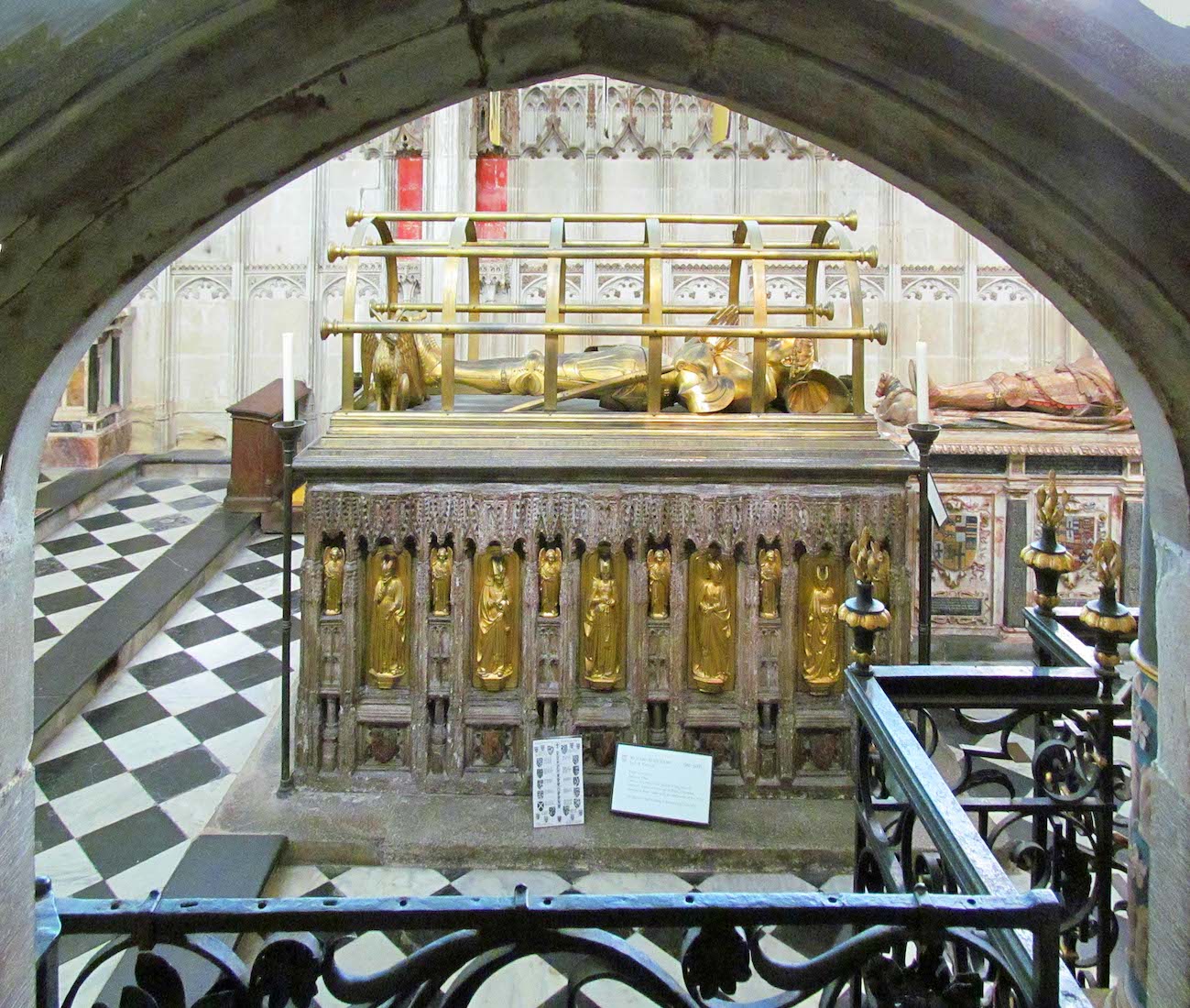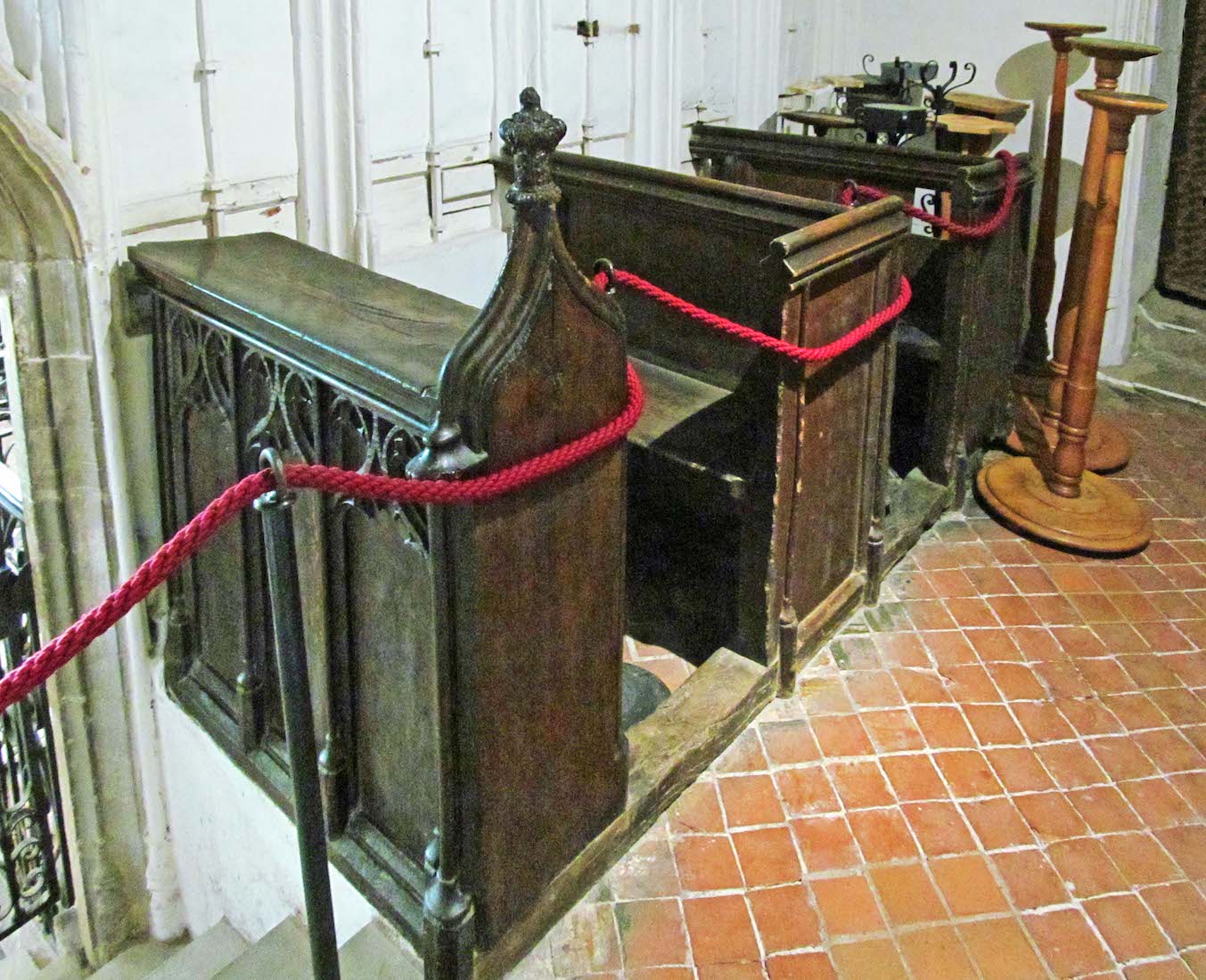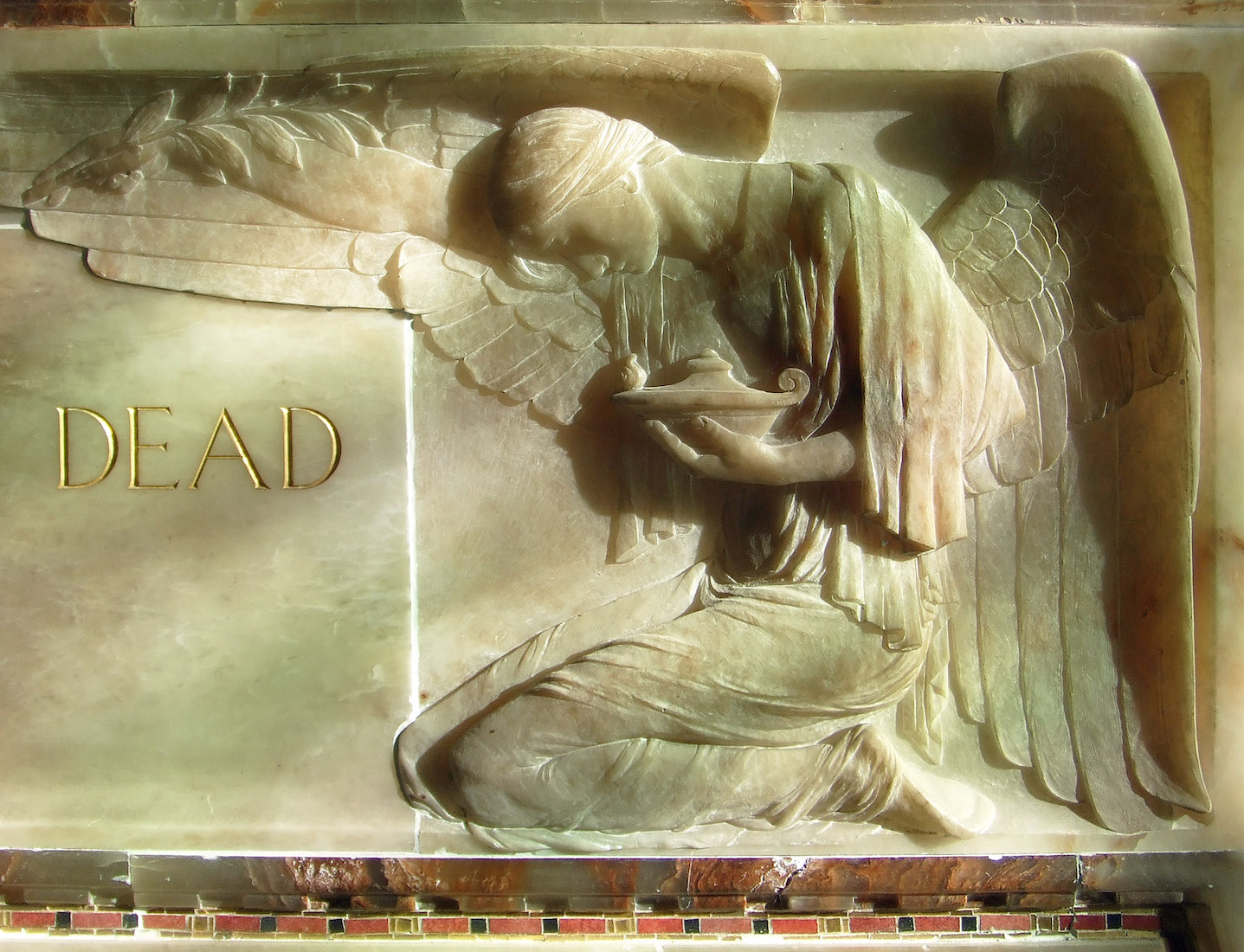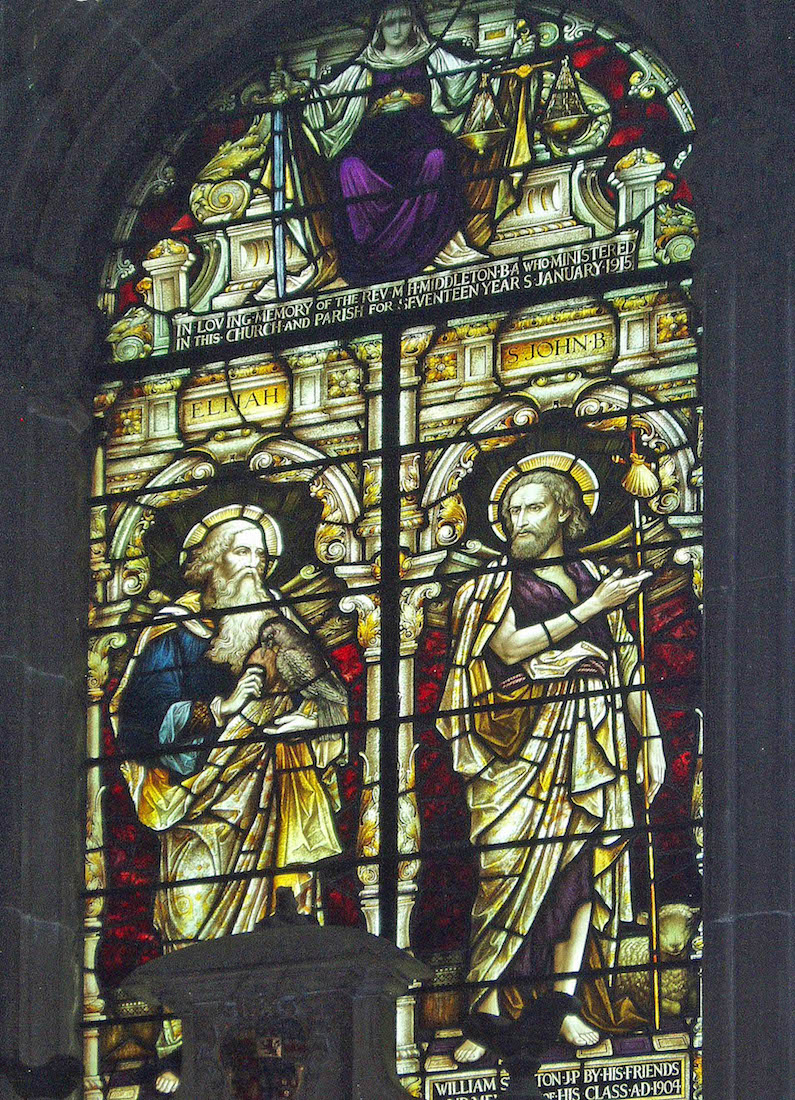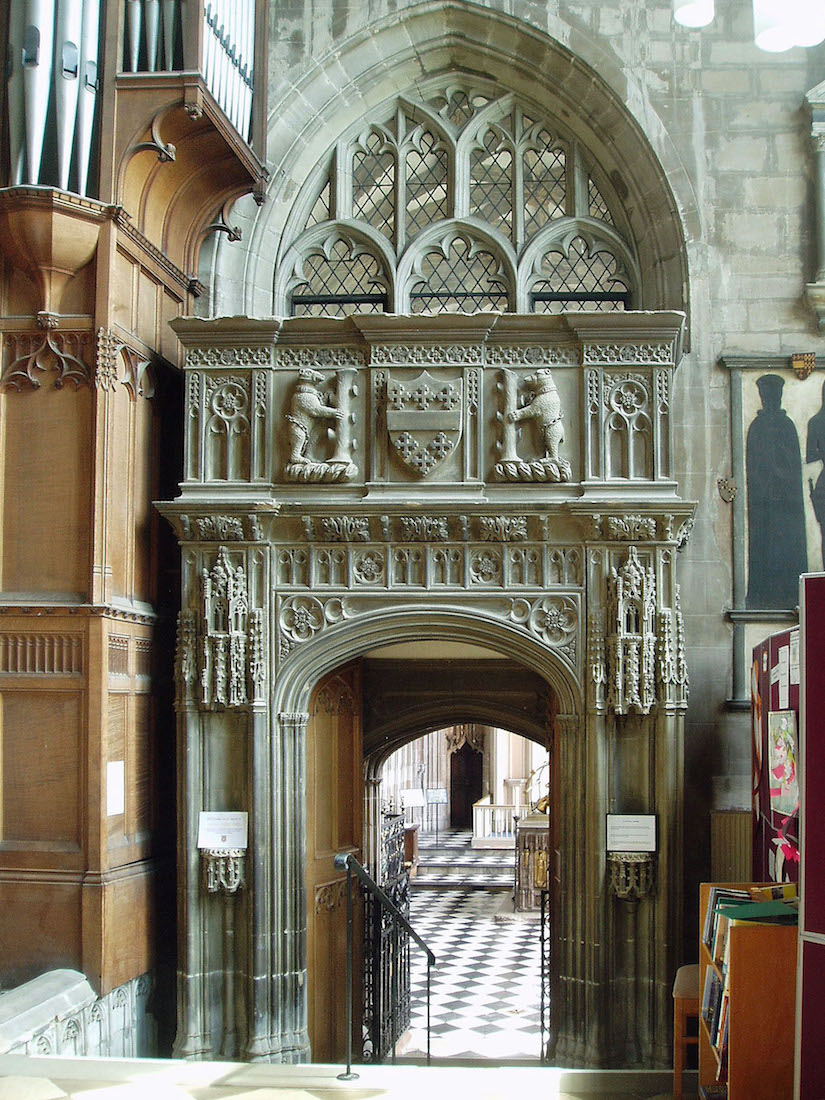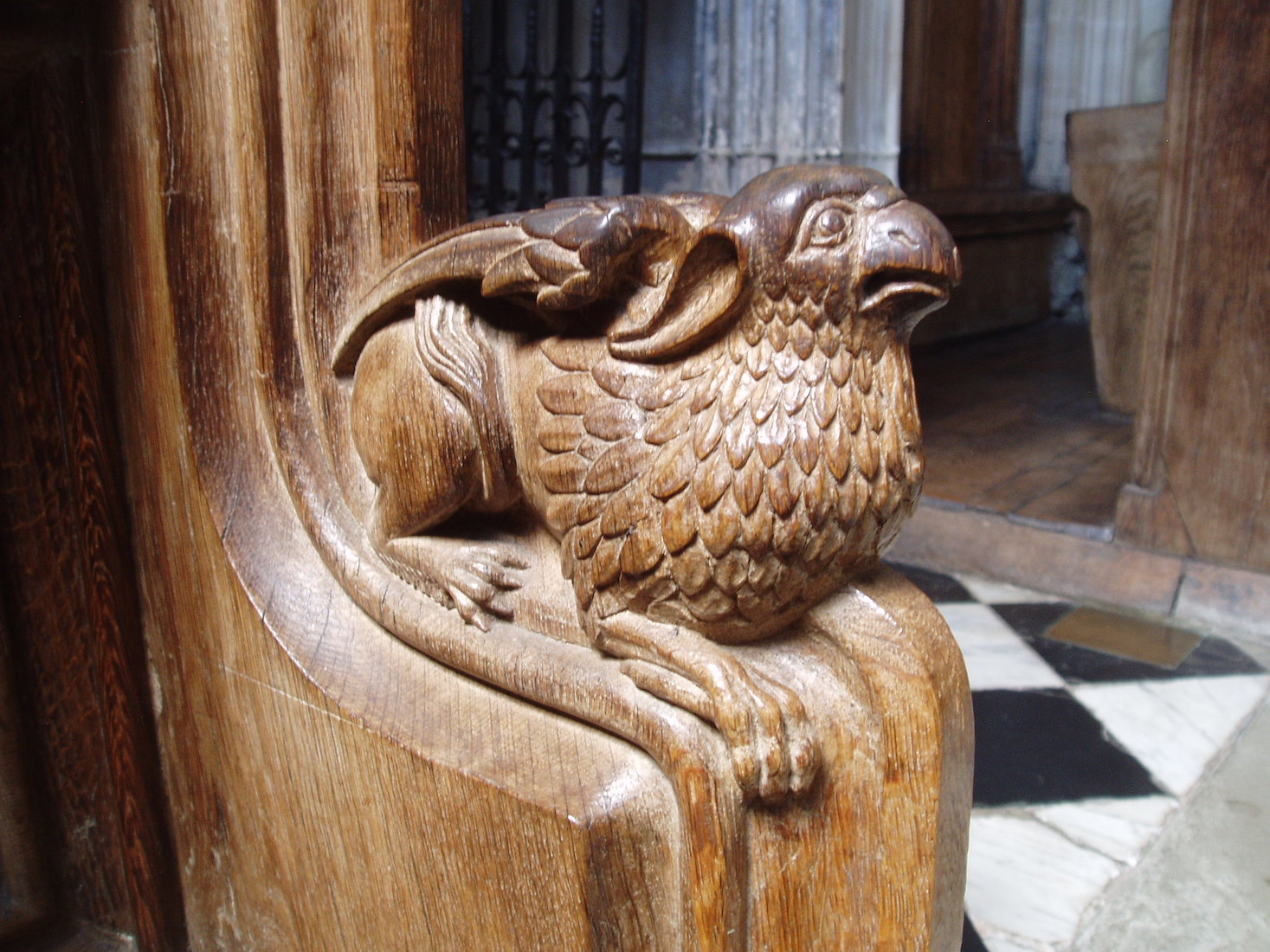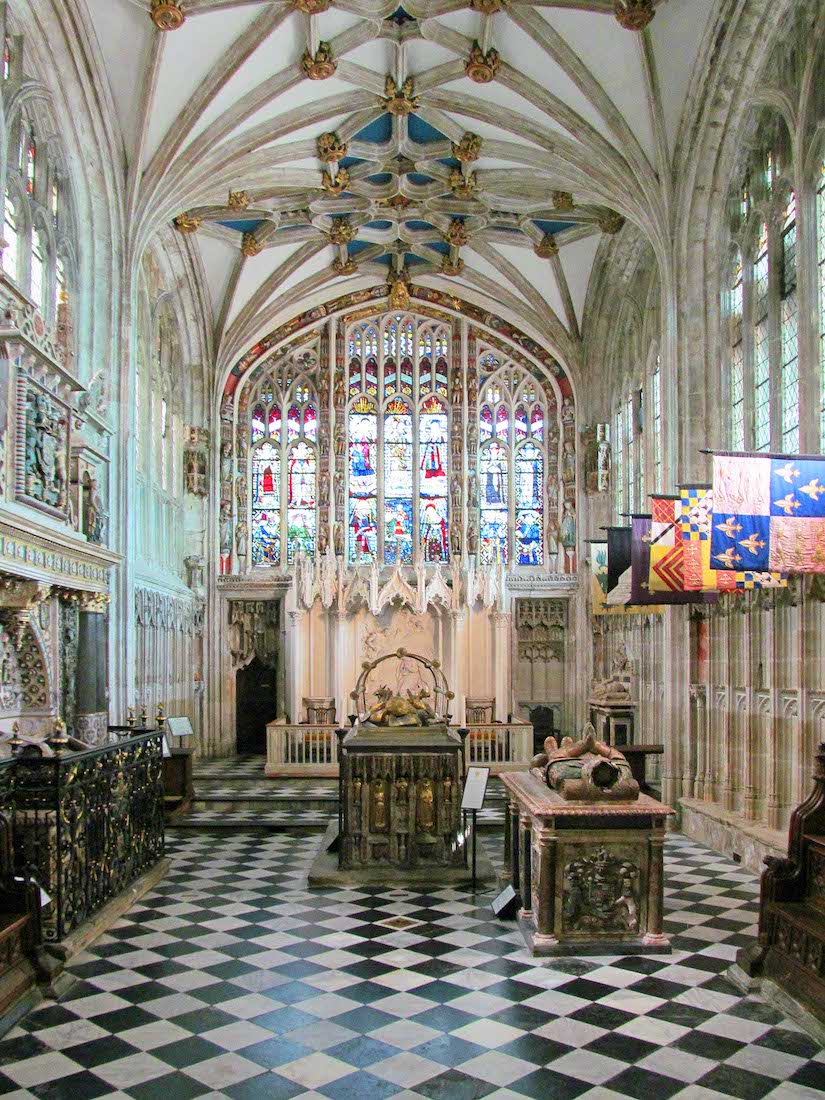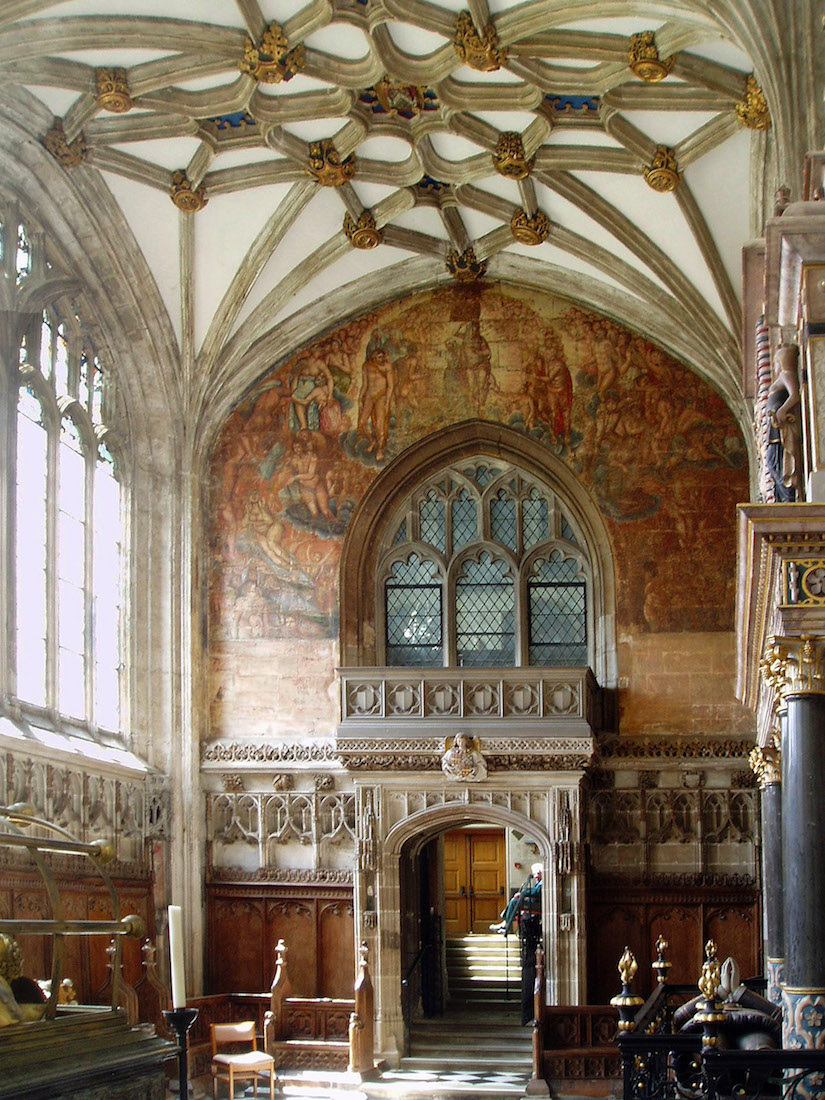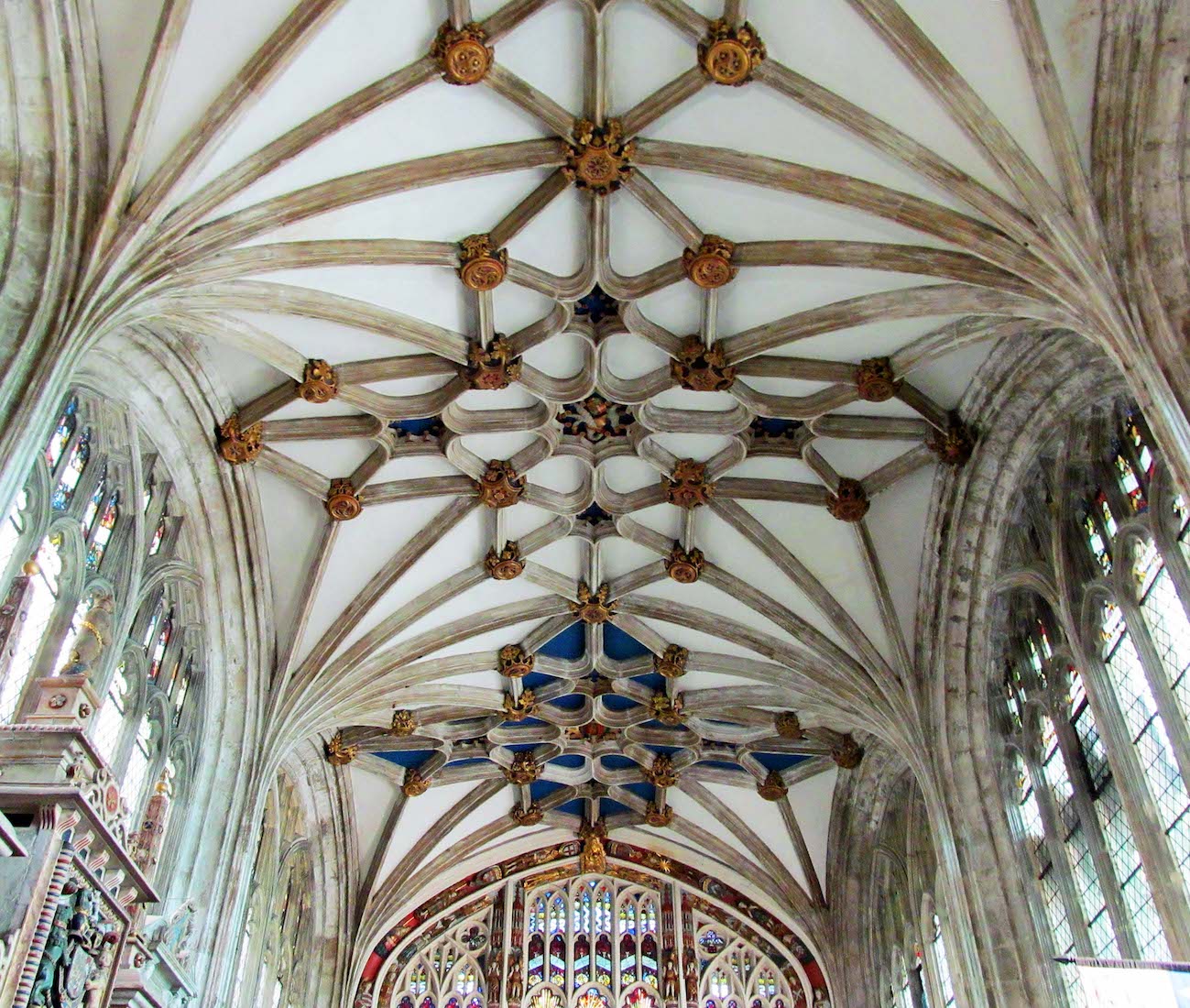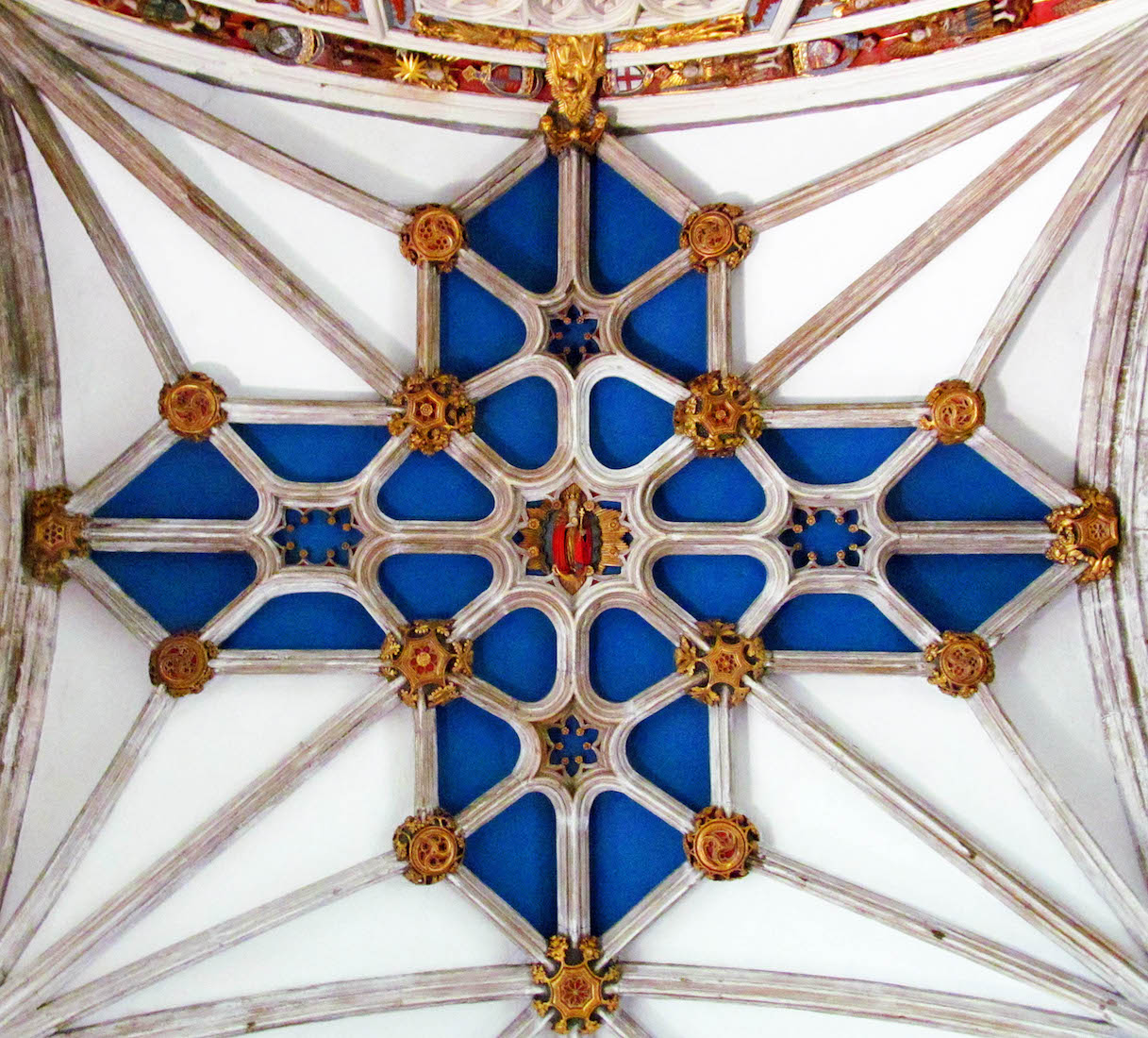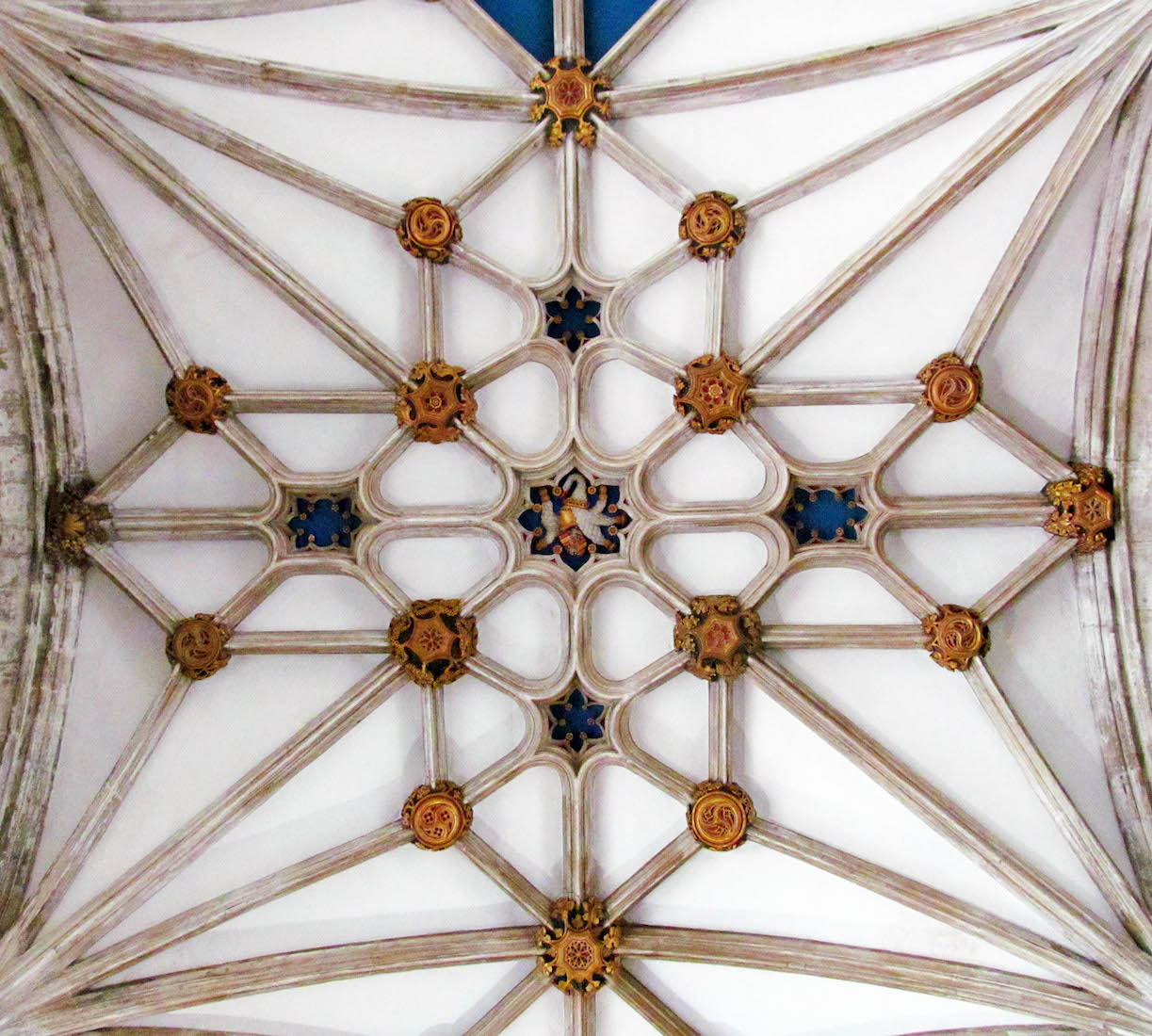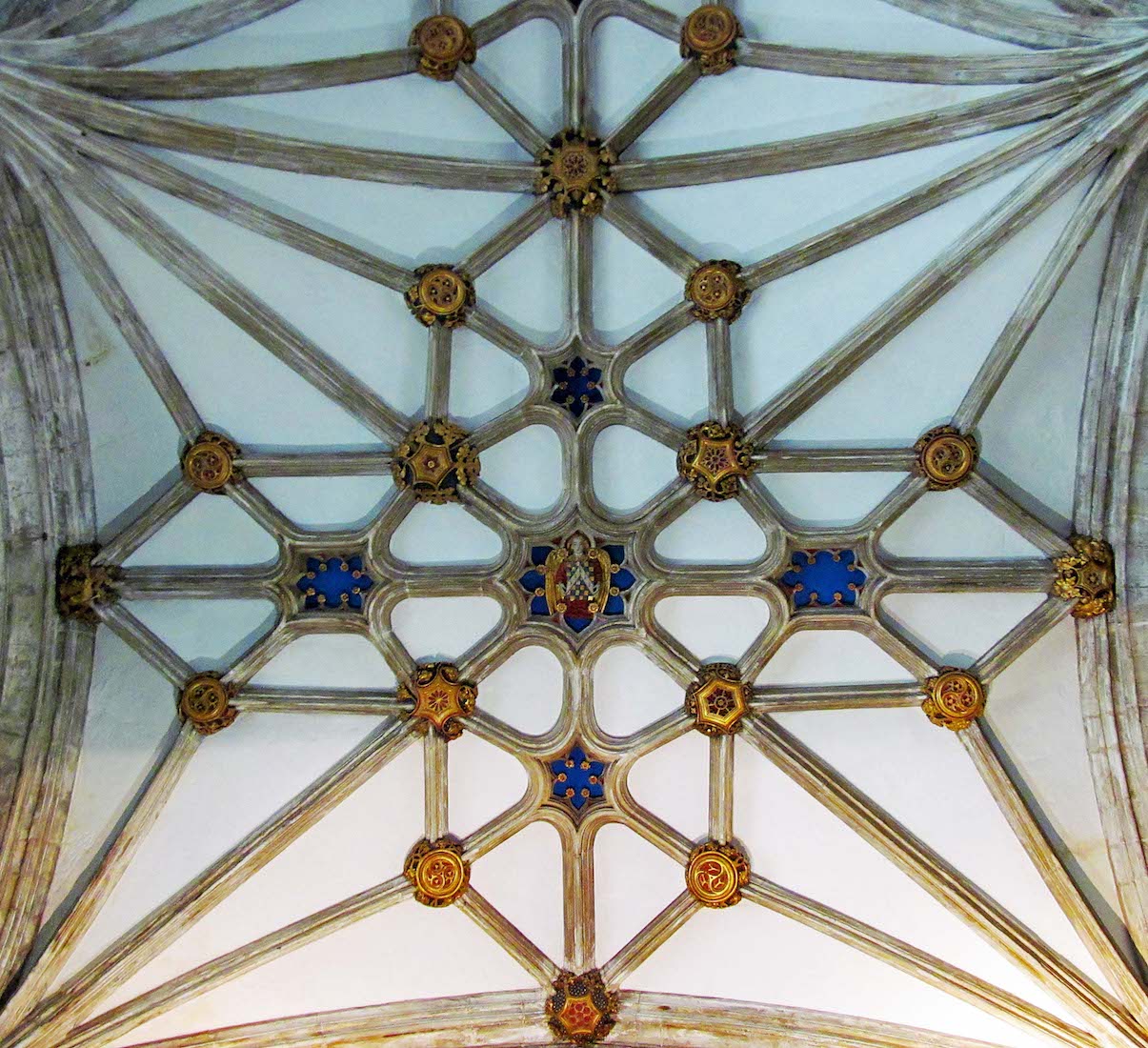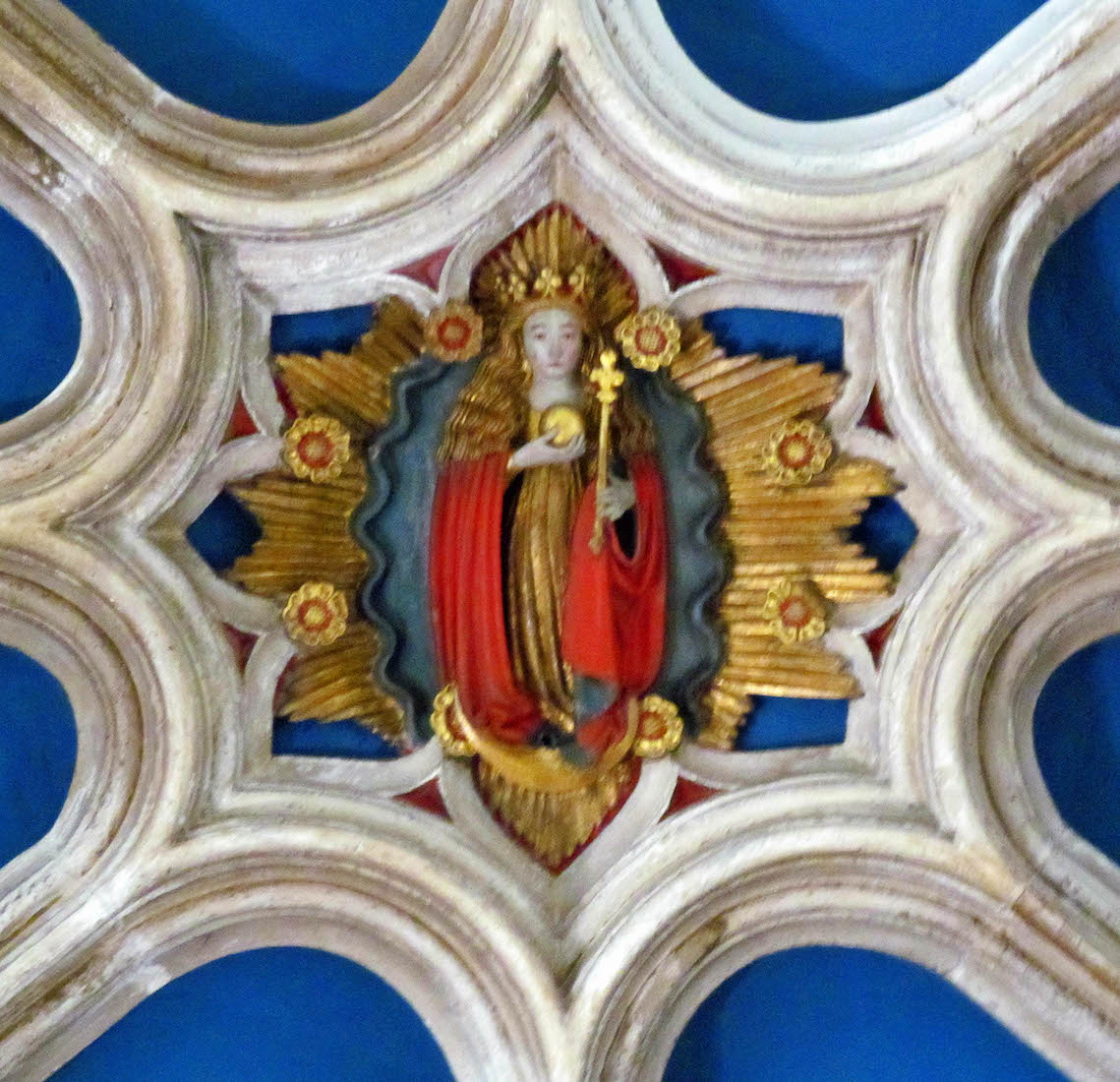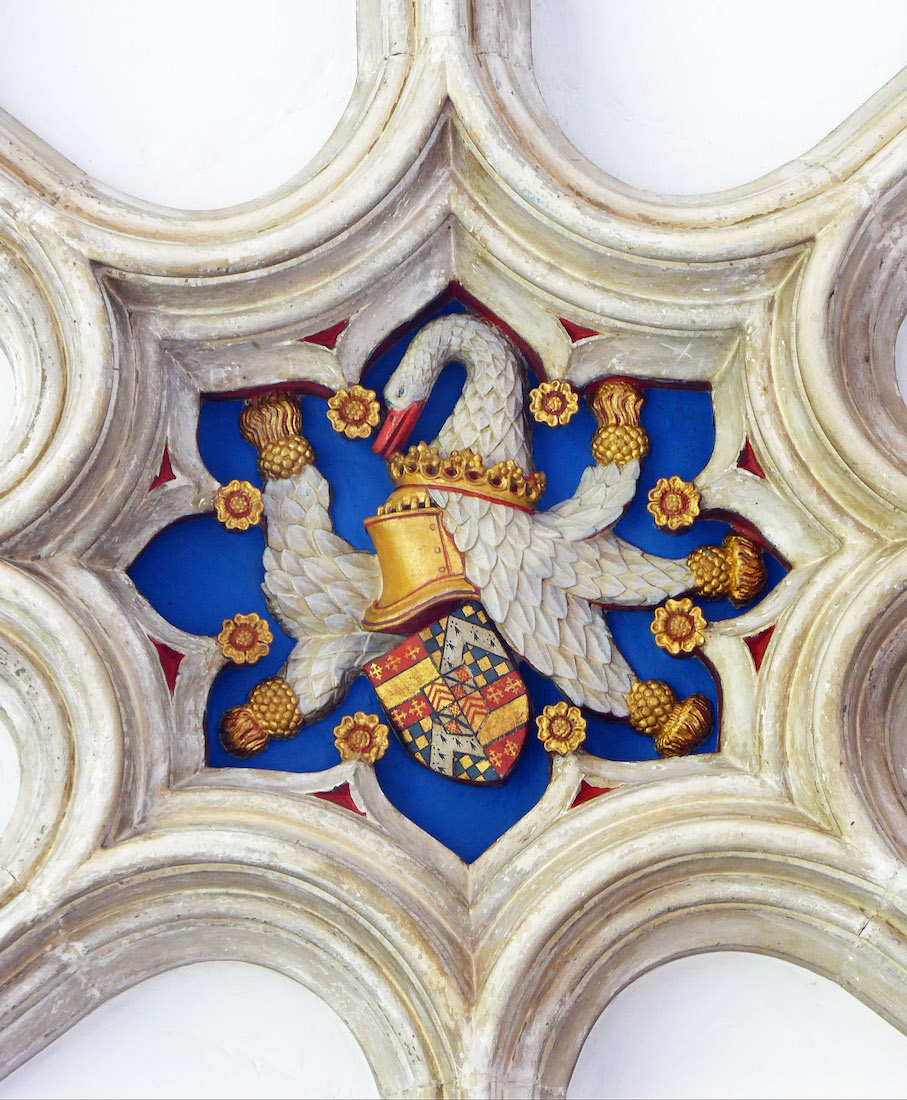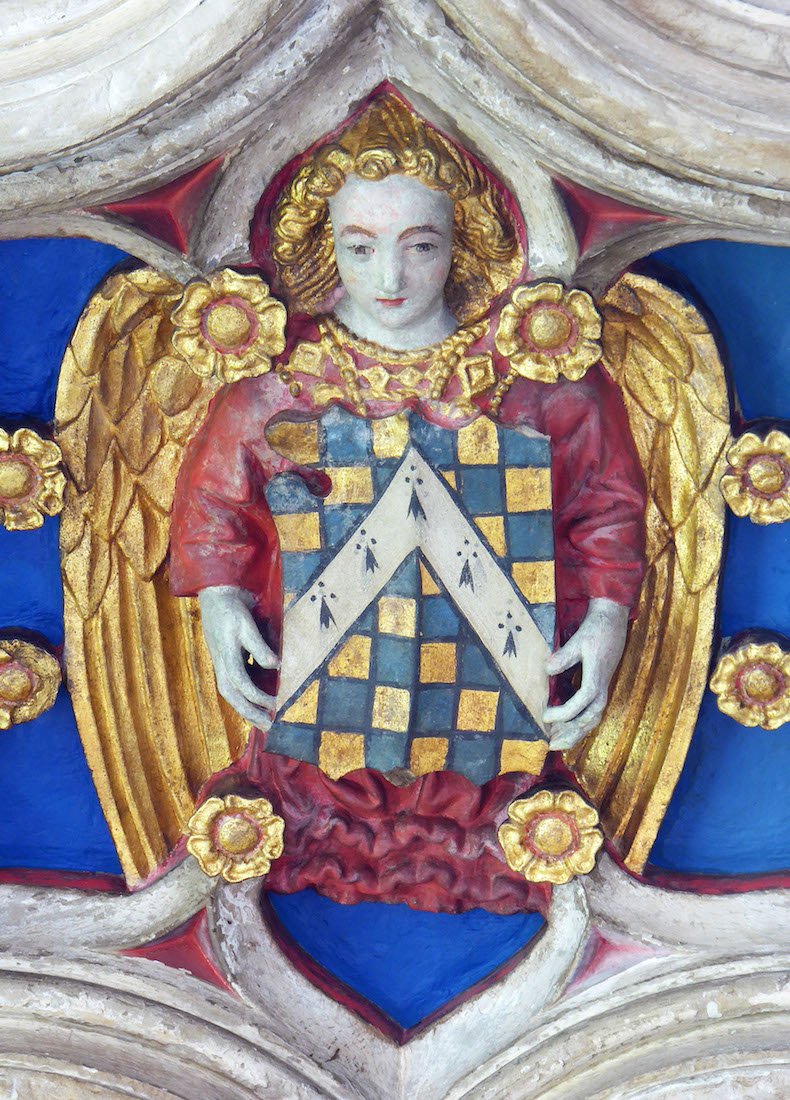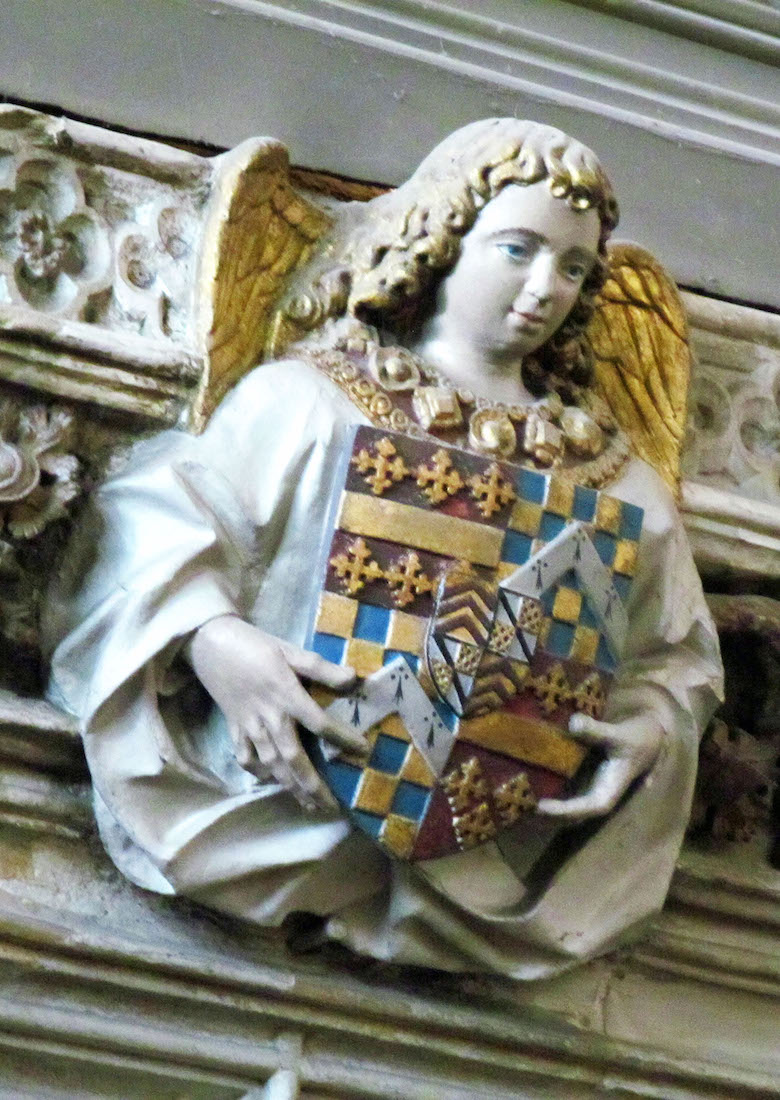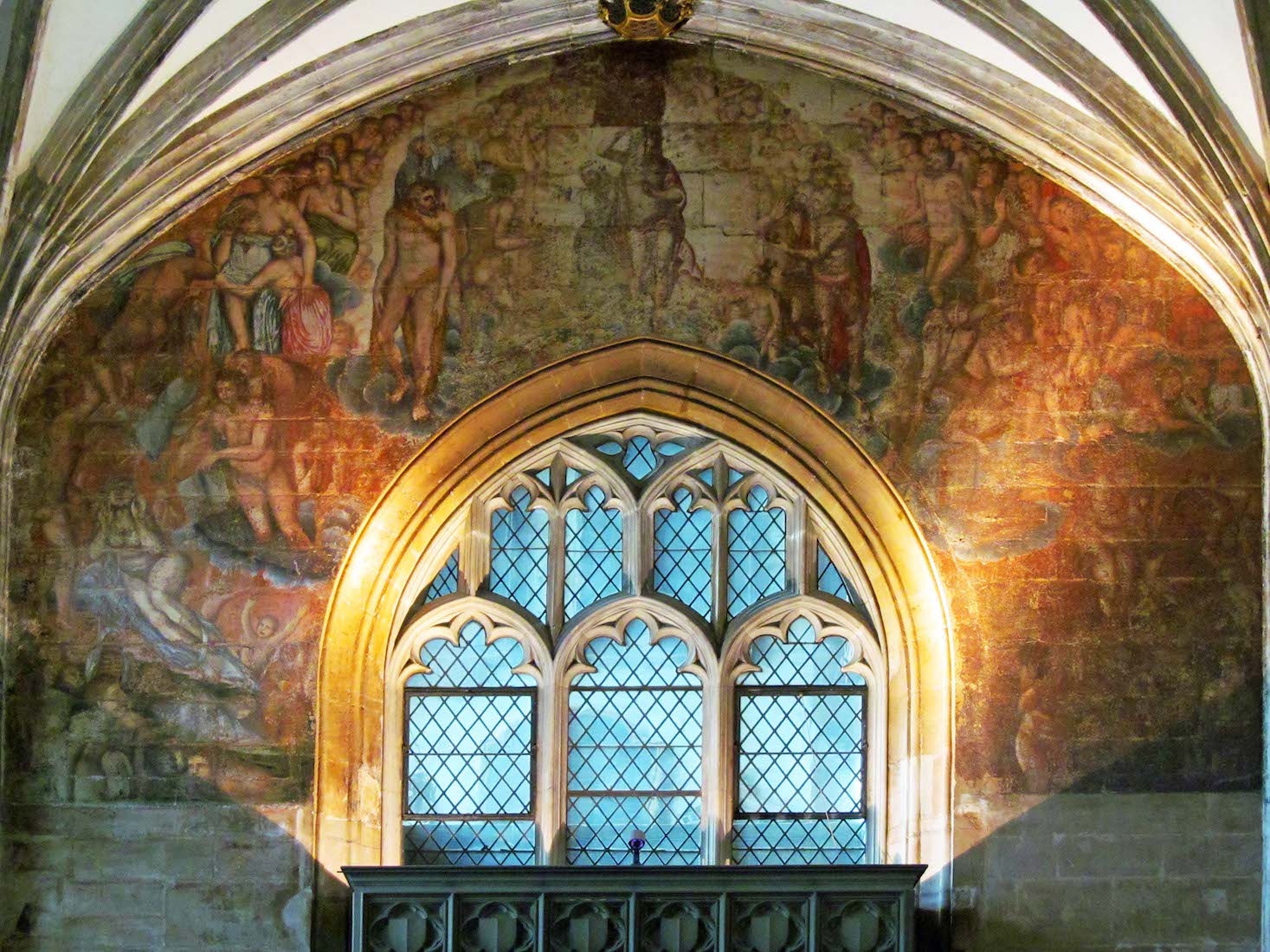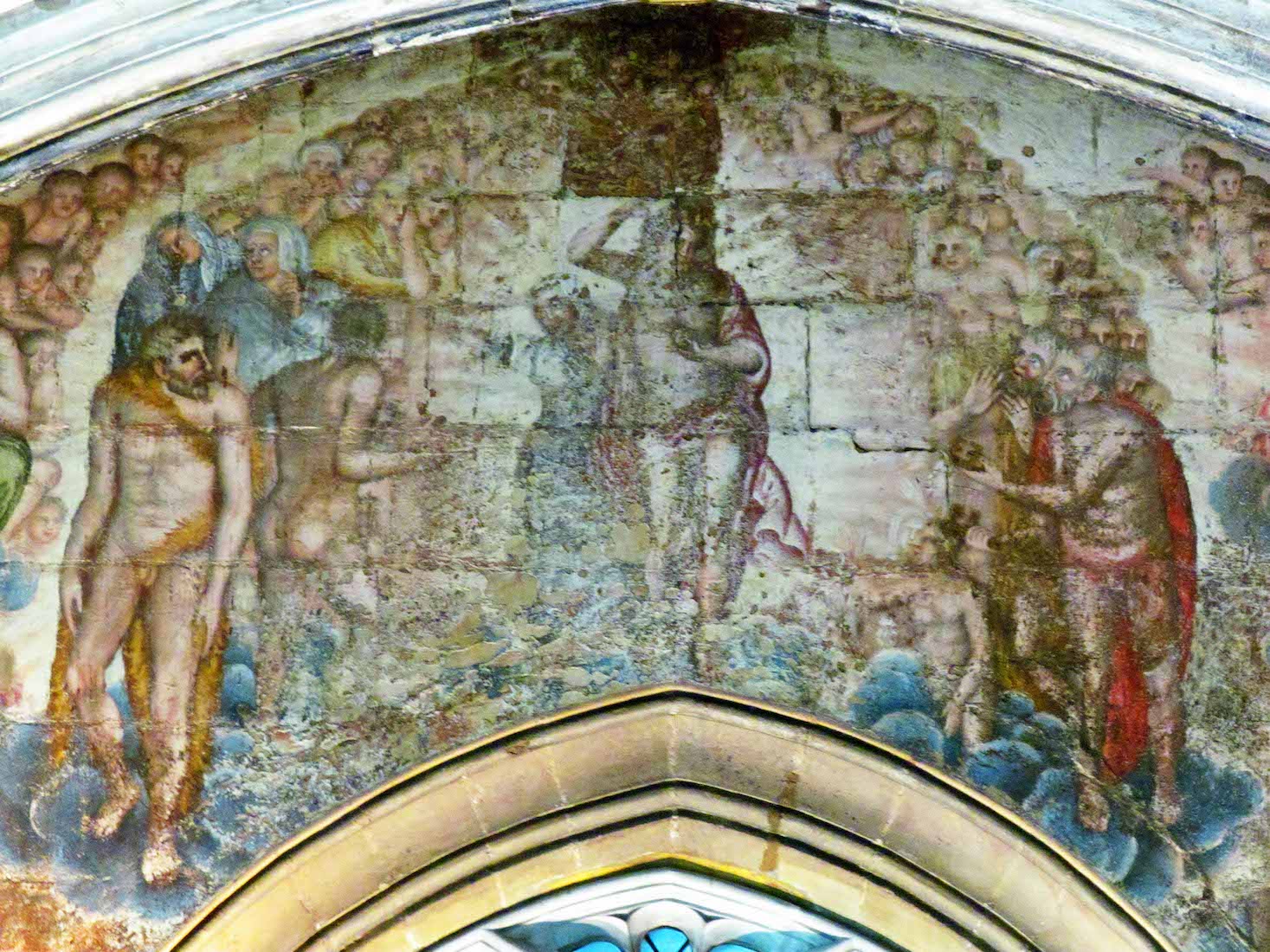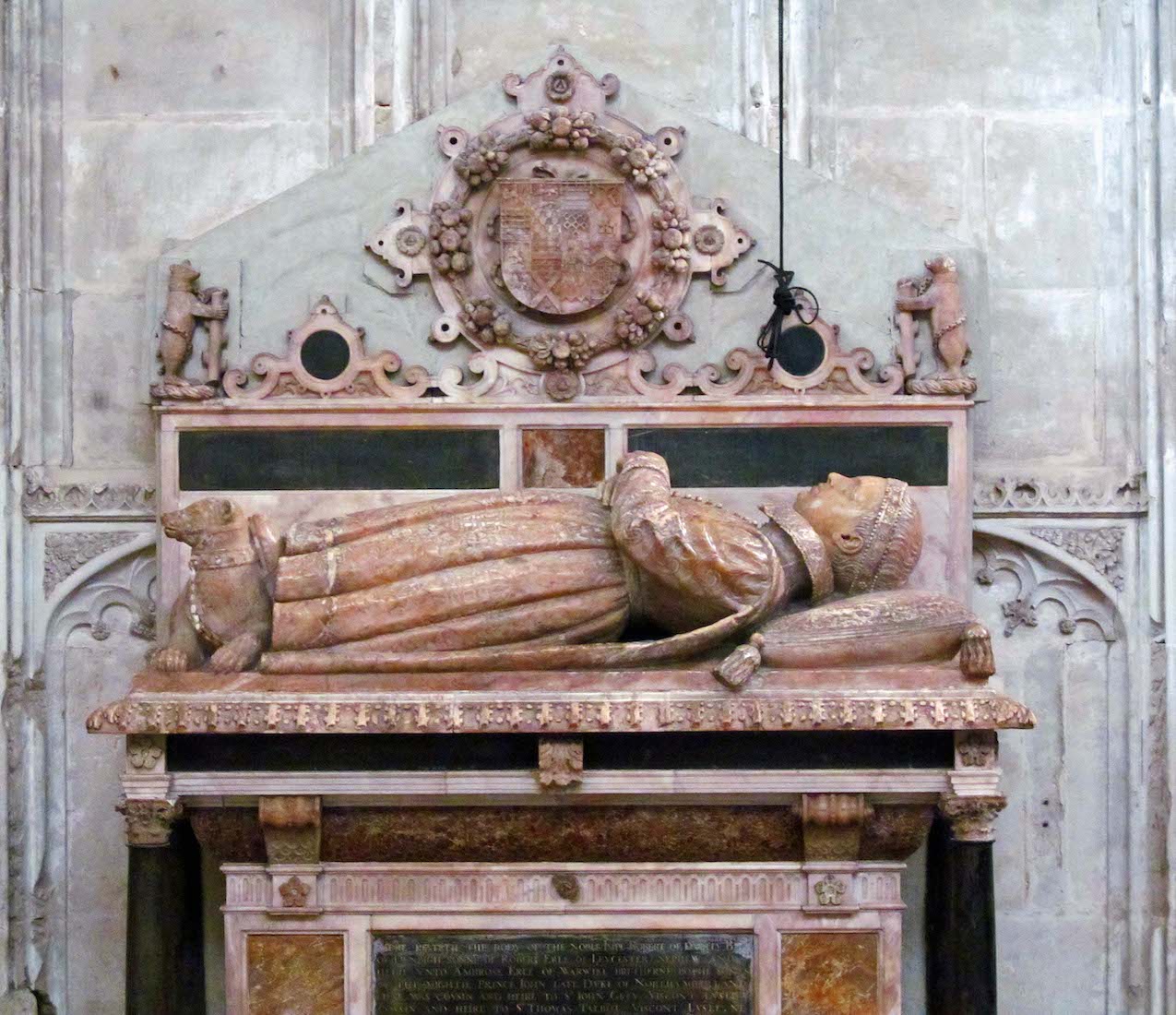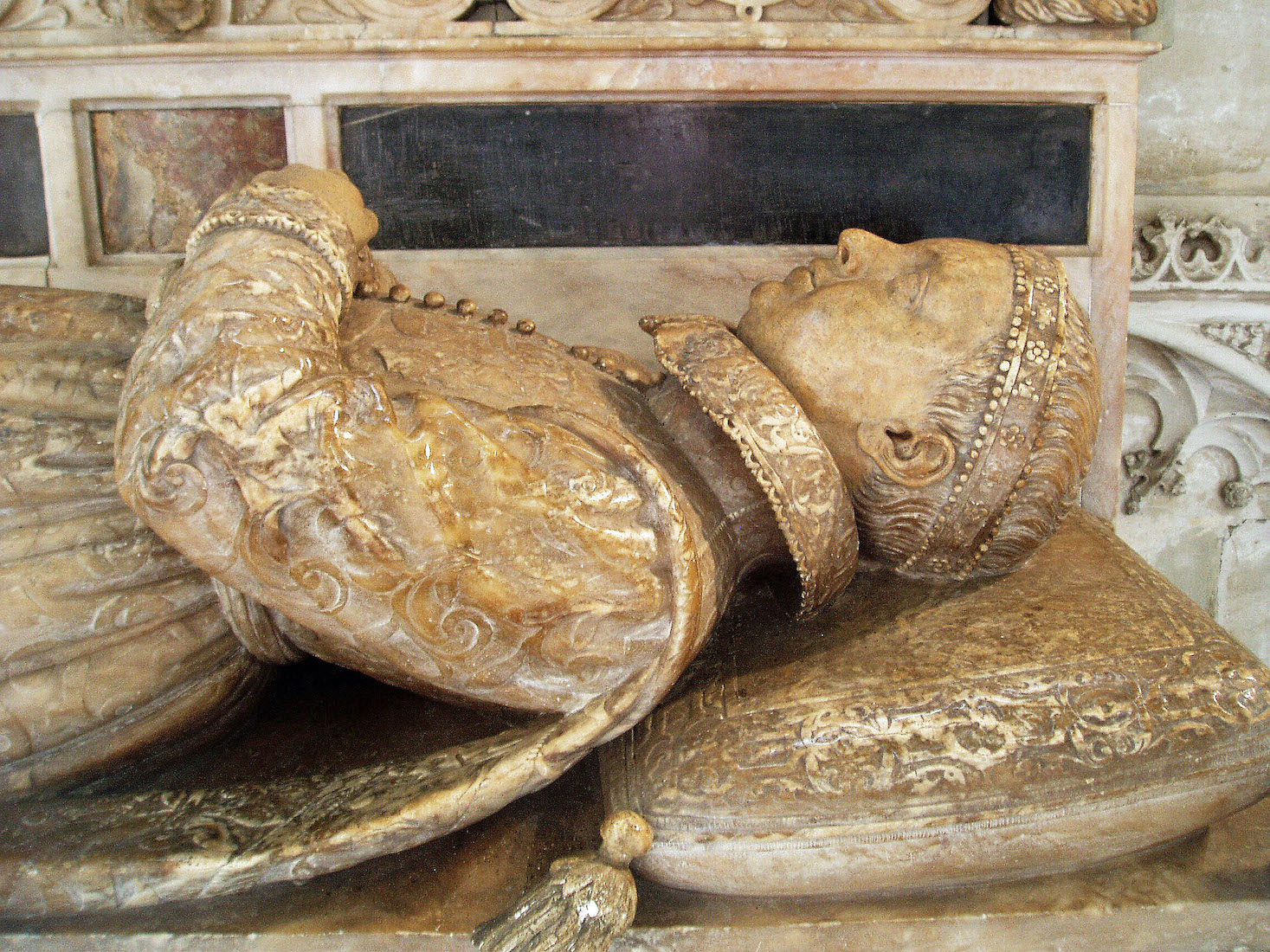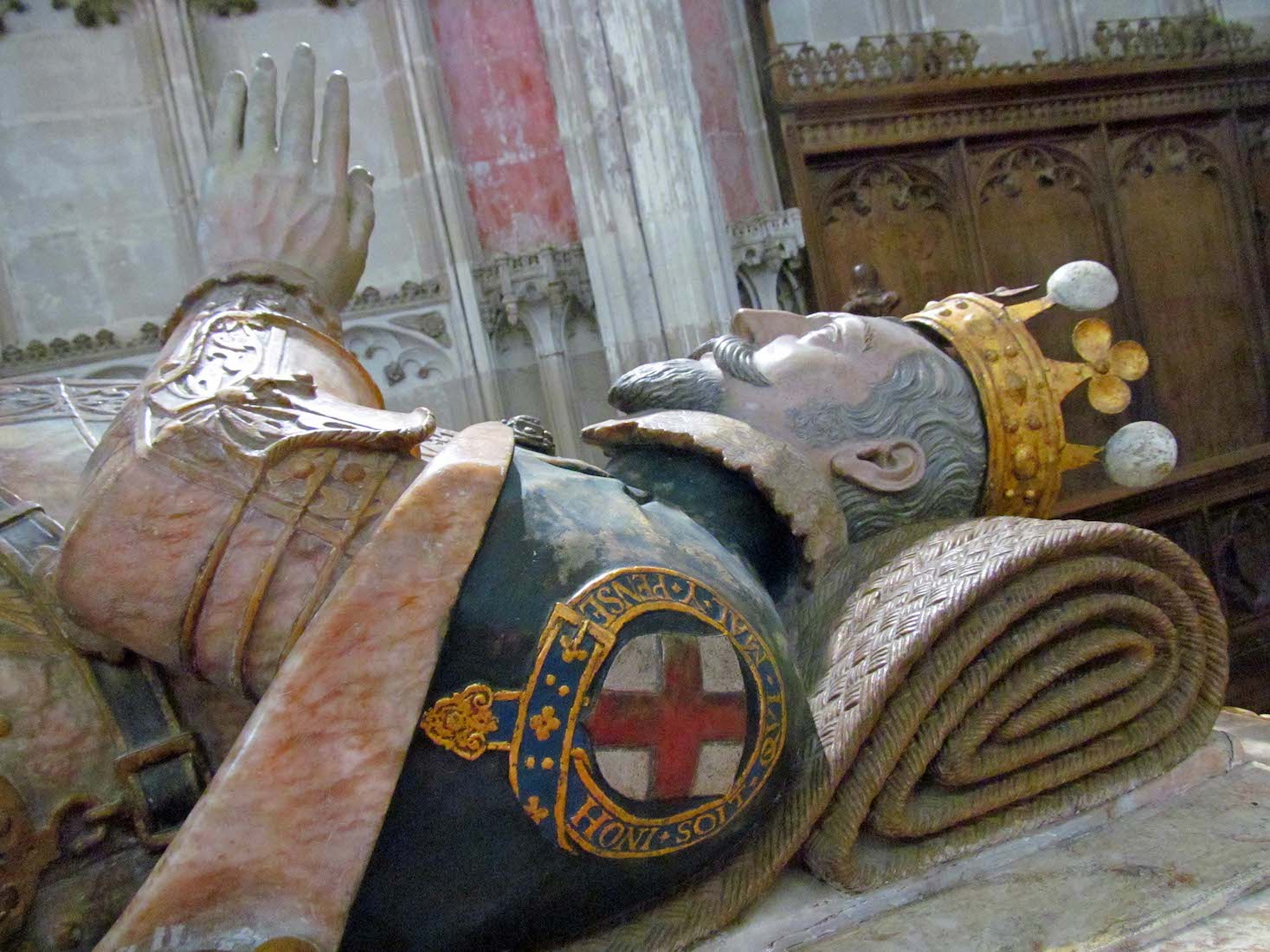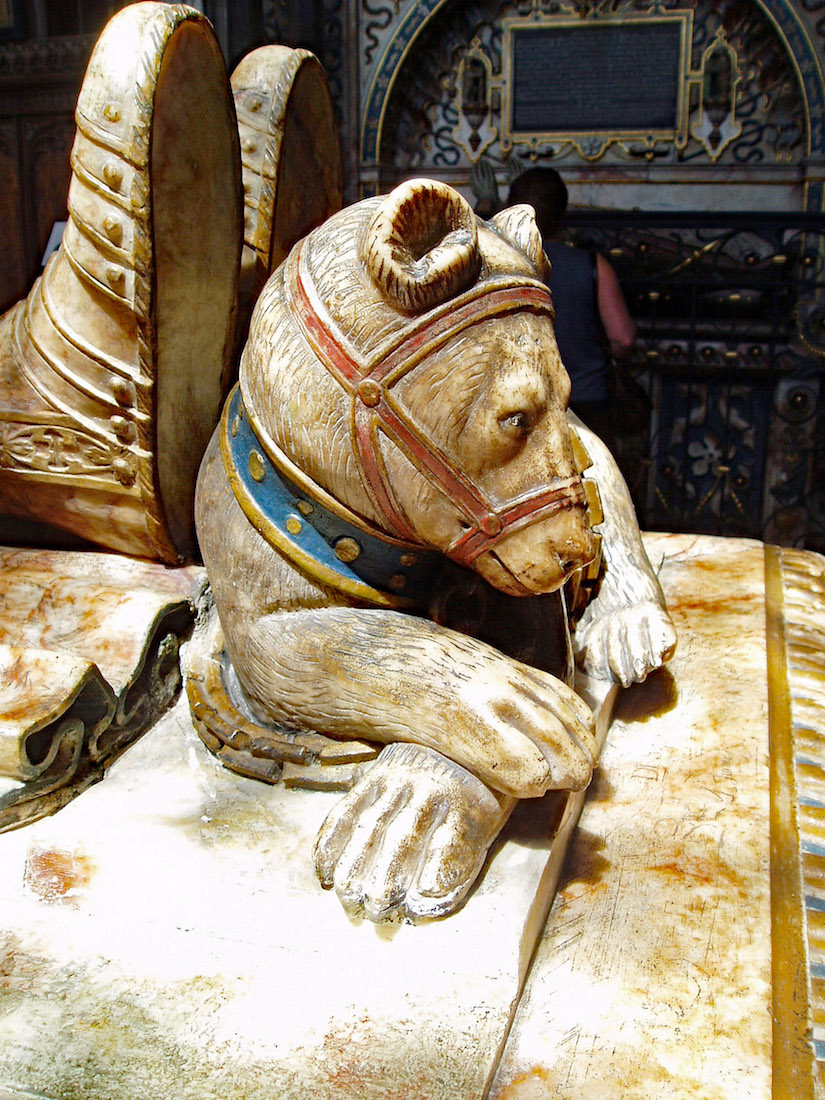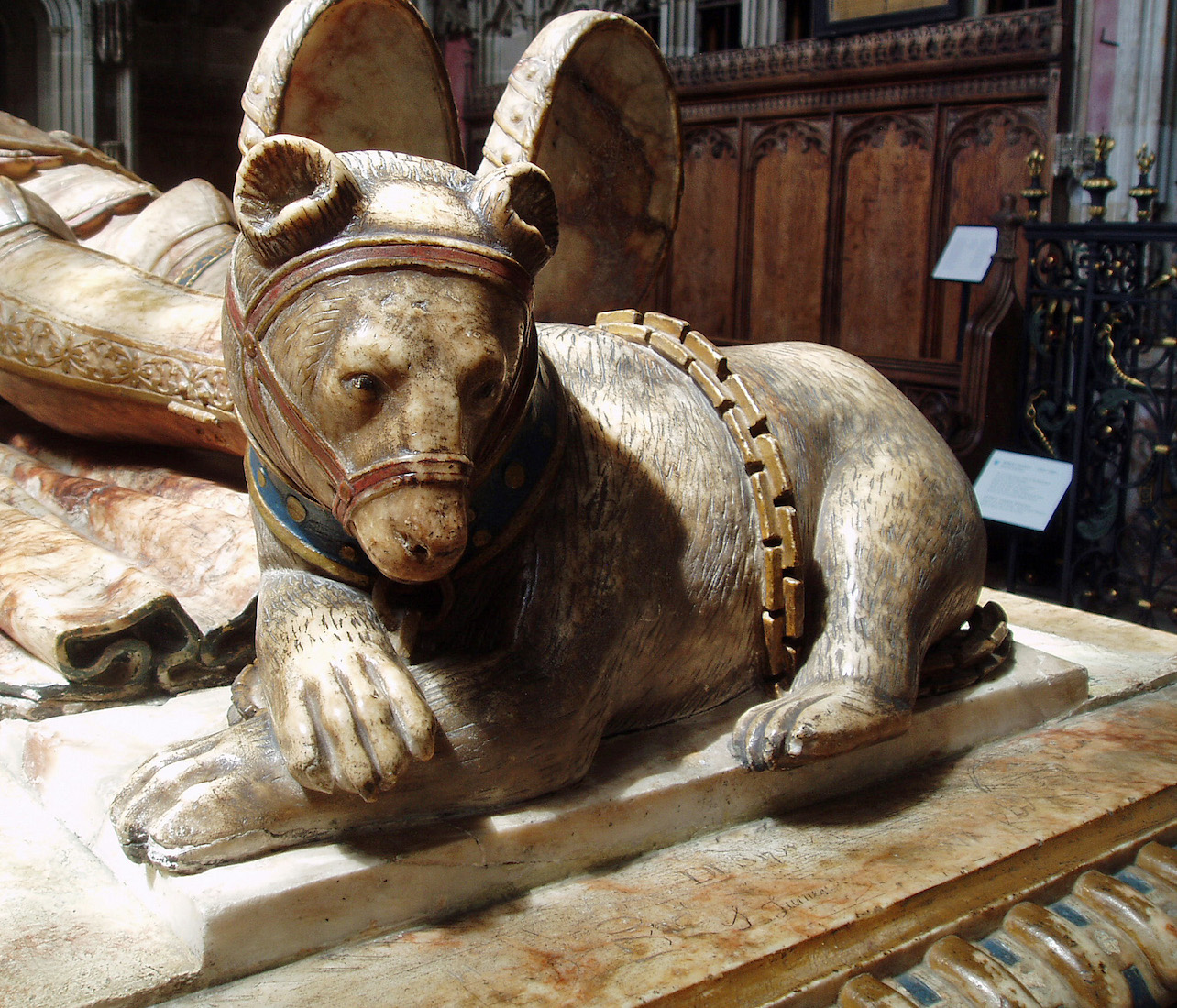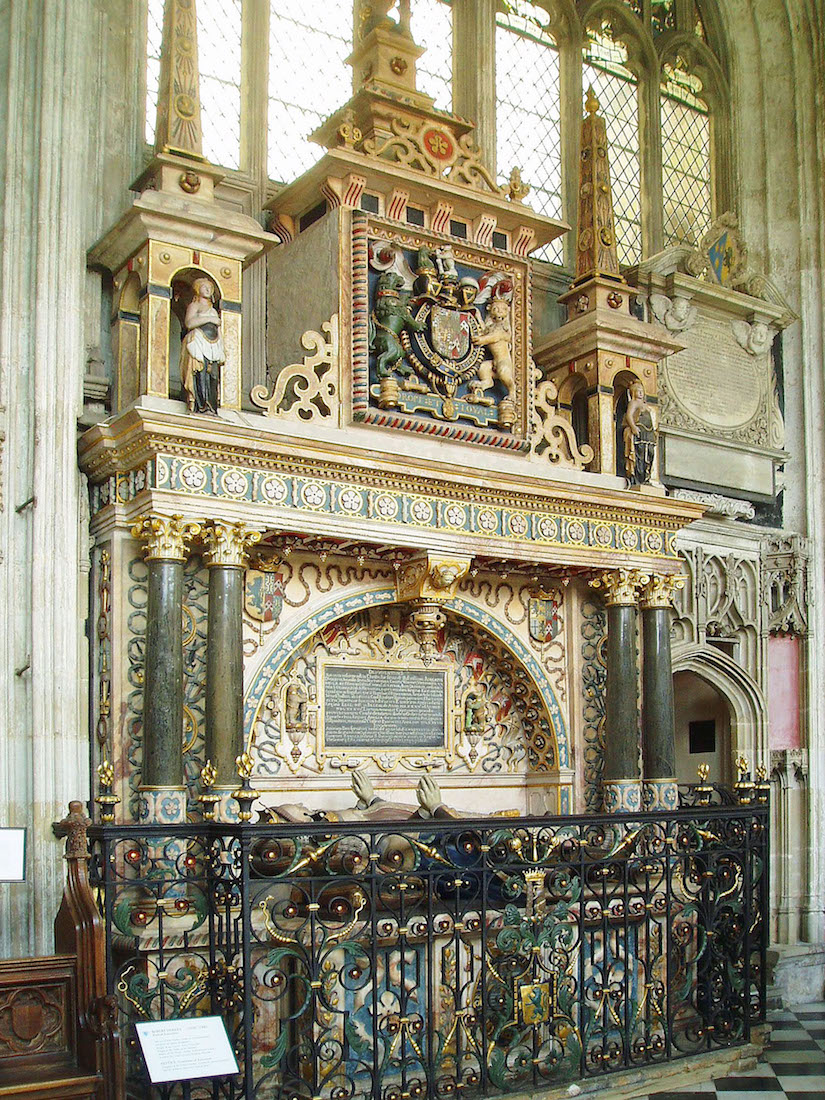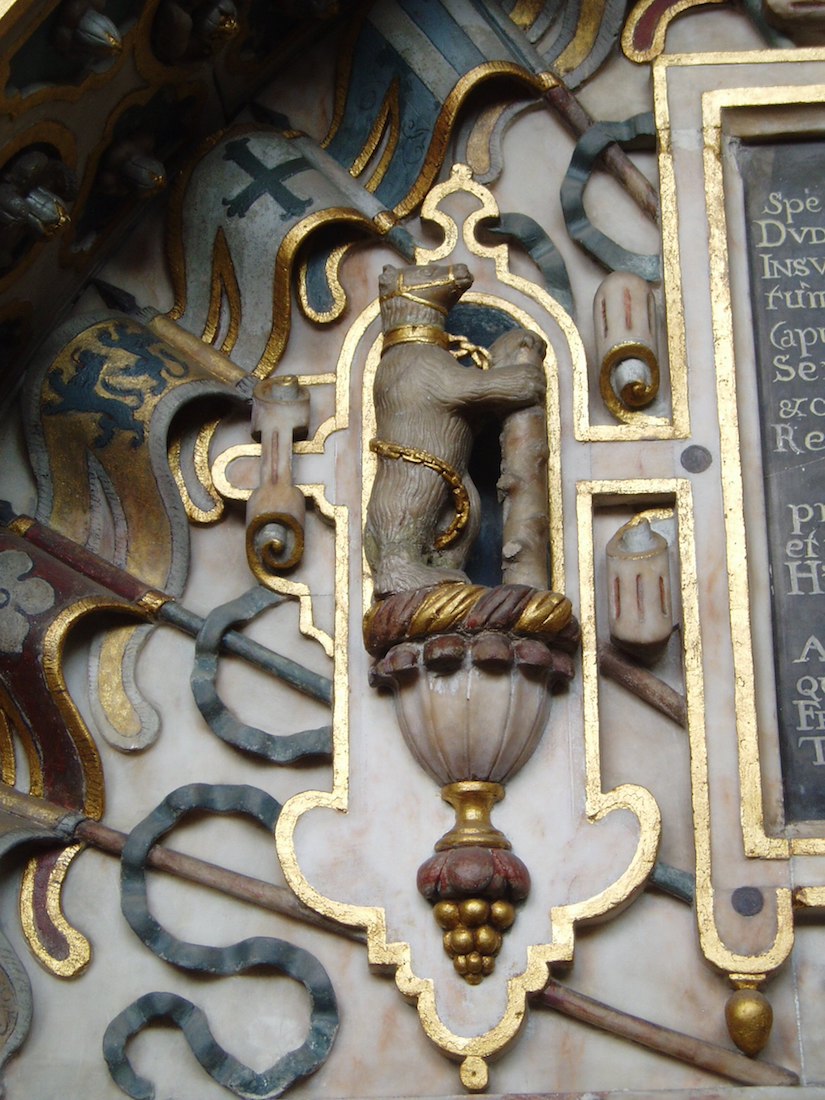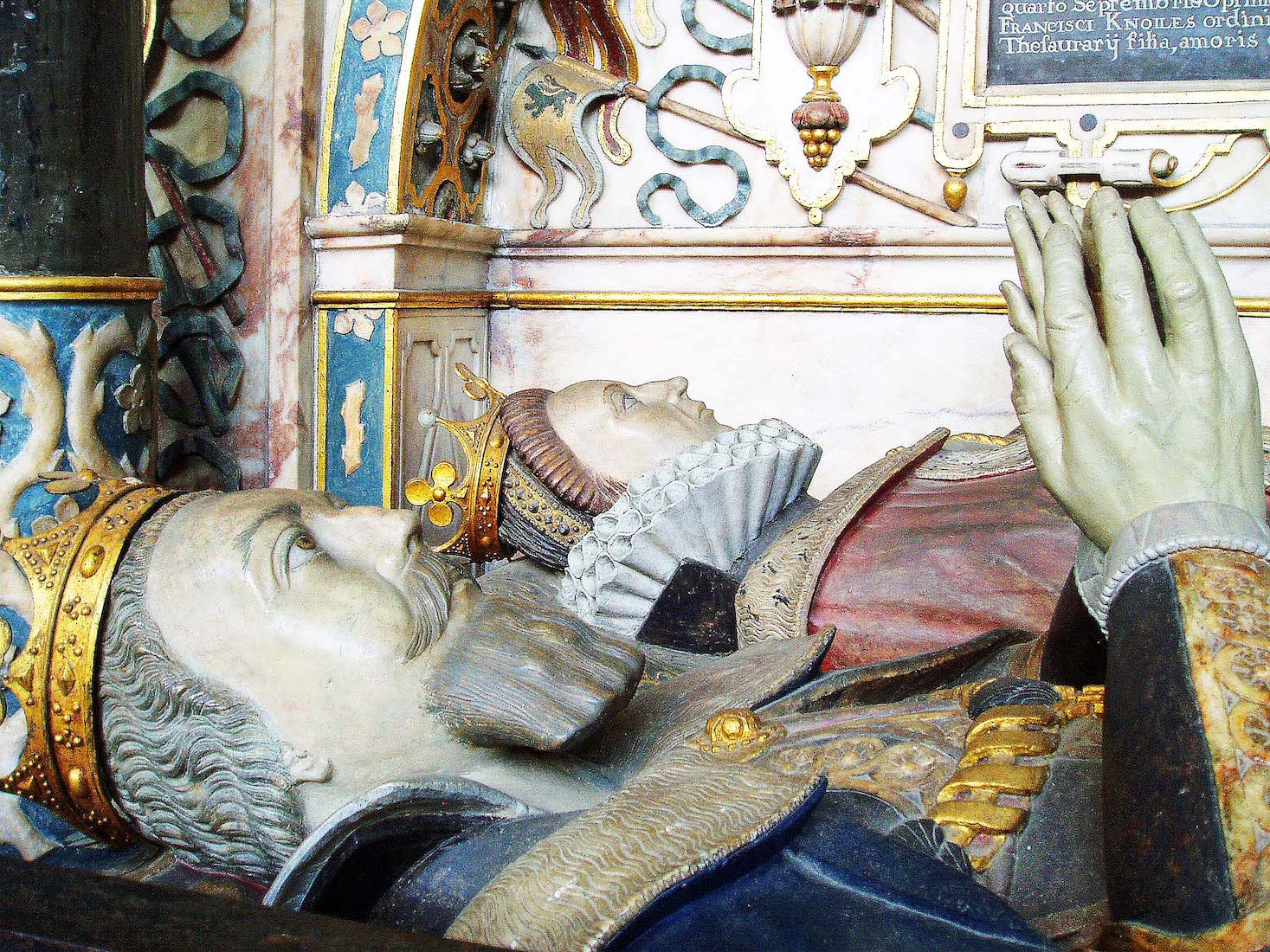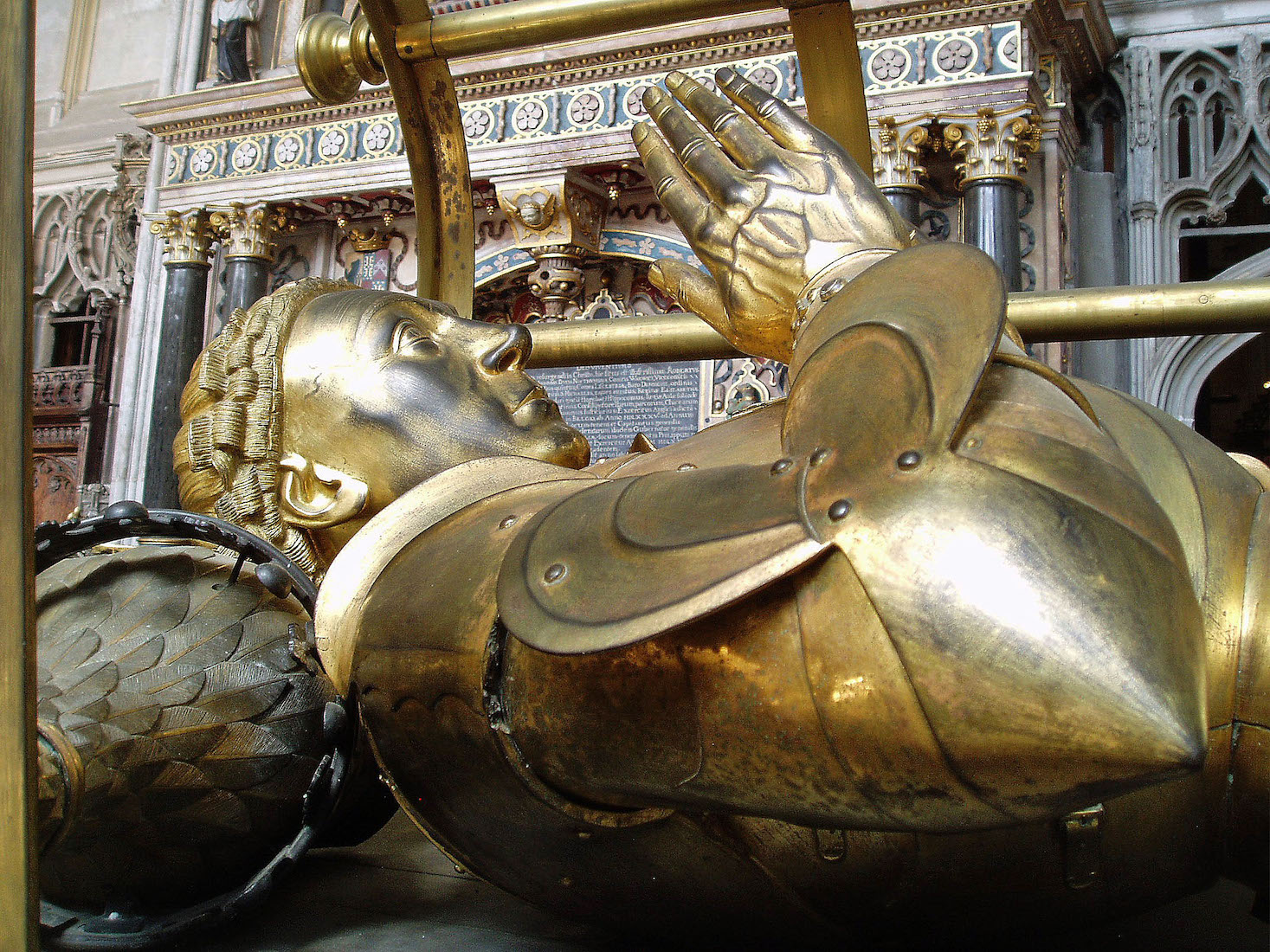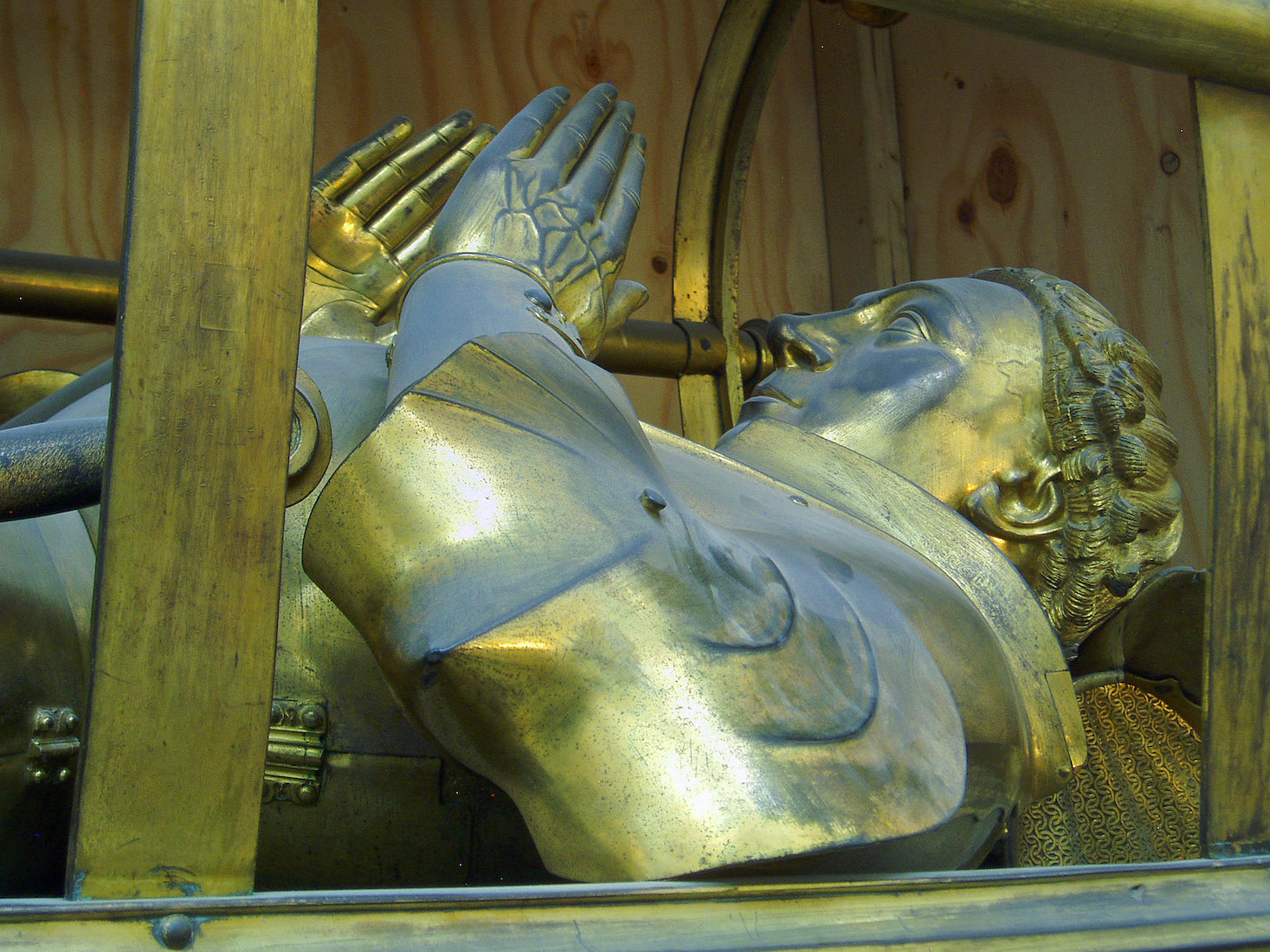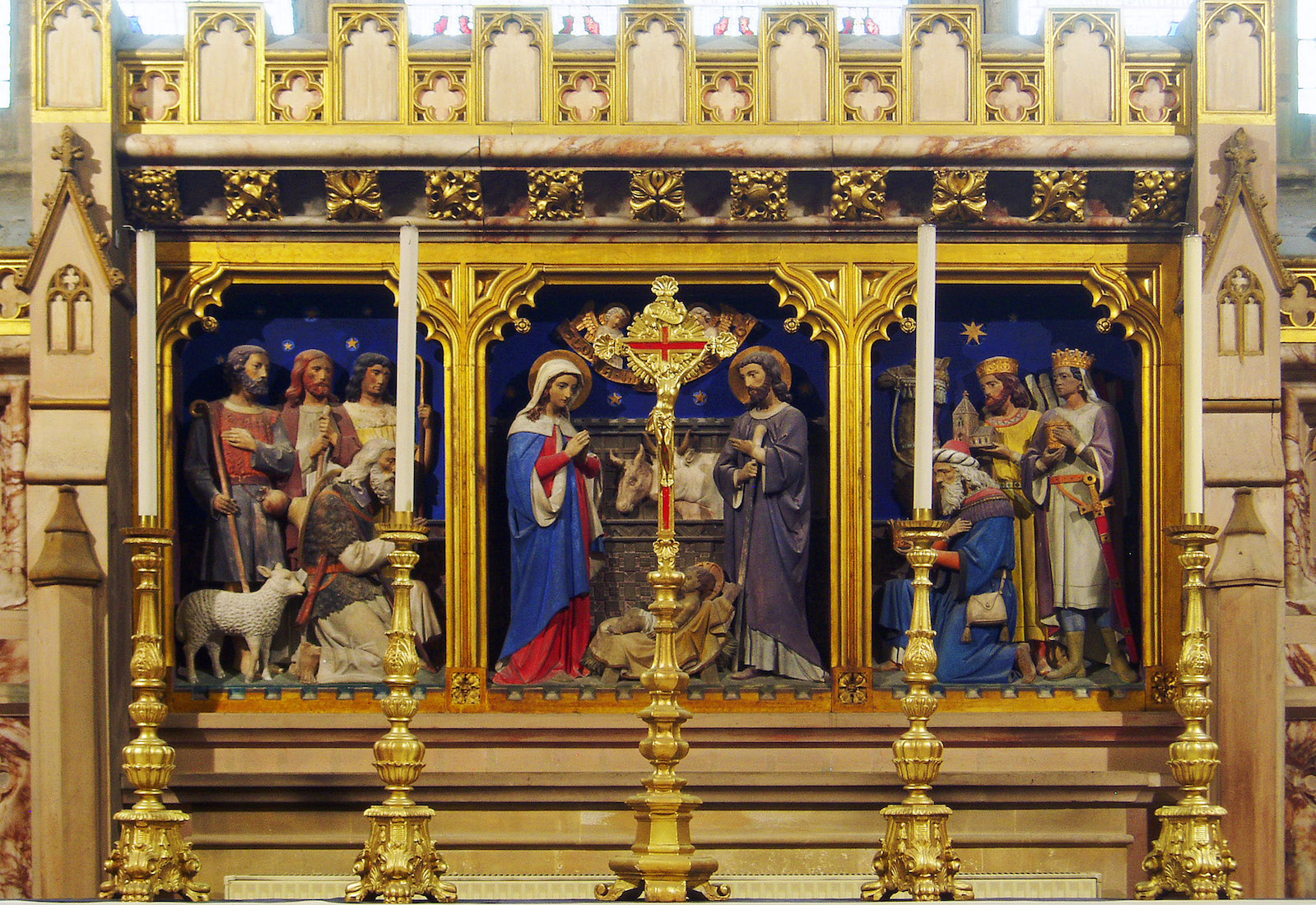
This delightful reredos depicts the Nativity of Christ, with the shepherds and wise men in attendance. INDEX
62. SANCTUARY EAST WINDOW AMT
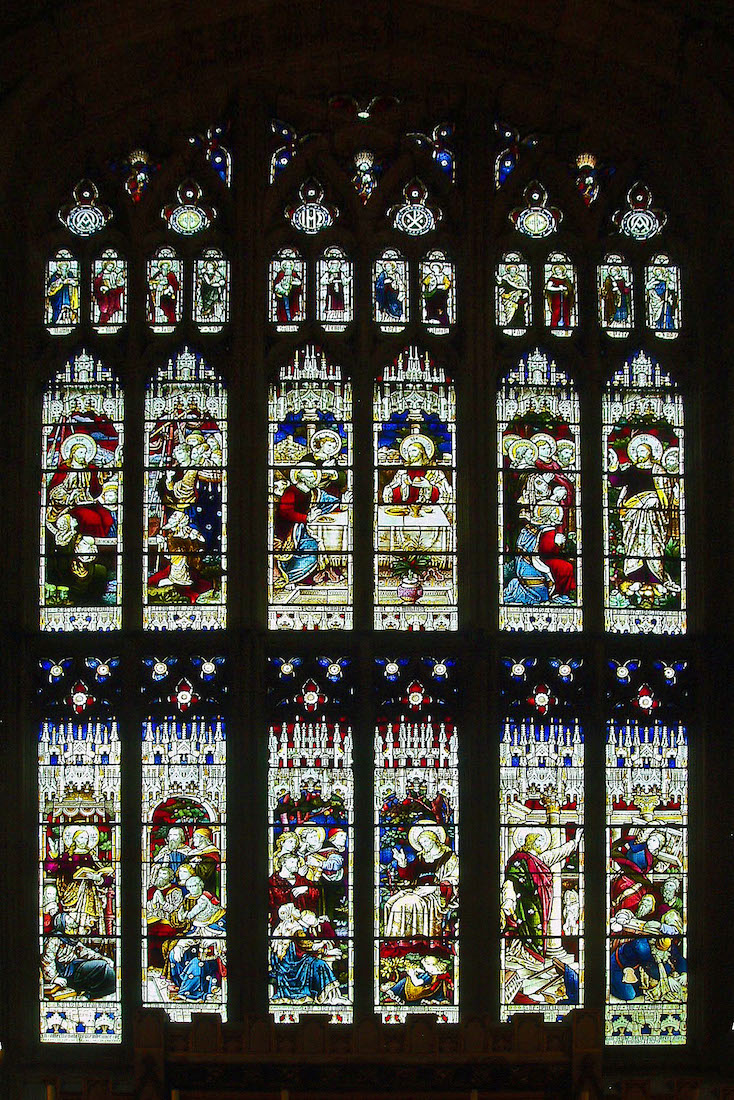
The main lights of the East window occur in pairs, depicting six scenes from the life of Christ. The window is by Heaton, Butler & Bayne (1879). All three of the founding members of this London stained glass firm had Warwick connections. Heaton had previously worked for William Holland, the local Warwick stained glass firm; Butler was born, baptised and married in Warwick (at this church?) whilst Bayne, though of Scottish descent, had come from Warwickshire. This window had in fact been ordered from the firm back in 1859, but was delayed for 20 years by lack of money. Amazingly the price of £600 remained the same twenty years on!
63. DEAN’S CHAPEL AMT
From the South side of the chancel a little passage leads through to the 15th century Dean’s Chapel – a curious little chapel somehow squeezed in between the chancel and the Beauchamp Chapel. The little windows on the South side of the Dean’s Chapel look out to the Beauchamp Chapel. The East window was installed in 2001. It is entitled ‘Noli Me Tangere’ (Touch me not). It represent’s Christ’s meeting with Mary Magdalene in the Garden of Gethsemane after His Resurrection, and was designed by Graeme Willson of York.
64. CHAPEL FAN VAULTING AMT
This is probably one of the smallest pendant fan vaulted ceilings ever built, and yet for it’s minute size an incredible wealth of detail has been lavished upon it. Pendant vaulting is considered to be a type of English fan vaulting. The pendant vault is a rare form of vault, attributed to fifteenth century English Gothic architecture, in which large decorative pendants hang from the vault at a distance from the walls. In some cases, the pendants are a large form of boss.
65. CHAPEL DETAILS AMT
Either side of the East window of this tiny chapel are two beautiful examples of late fifteenth century canopy work which must once have housed several sculptures (presumably the smaller figures would have been of metal). Sadly the statuettes that once inhabited them are long lost, and even the architectural detail itself has been sorely abused by Cromwell's cronies. As we contemplate the loss of past treasures, the altar candle reminds us that Christ is the still present Light of the World.
66. CHAPEL REAR WH
The passage from chancel to Dean’s Chapel in fact continues through to the Beauchamp Chapel, but public access through here is gererally disallowed. No large services are held in the Dean’s Chapel!
67. SOUTH TRANSEPT AMT
The South transept is something of a poor relation amidst the grandeur of St Mary’s. Against the South window there is a War Cenotaph with a grieving angel. The window itself is mostly clear, but with a single panel of stained glass (above right). Also in this transept are brass plates with pencil and paper for those interested in the old art of brass rubbing.
68. DOWN TO BEAUCHAMP CHAPEL AMT WH
From the South transept we descend a short flight of steps to the famous Beauchamp Chapel. The archway is ornate, with two images of the bear and ragged staff – a heraldic emblem associated with the Earldom of Warwick. The origin of the bear symbol is a bit of a mystery, but the connection to the family is very strongly held. At the foot of the stairs we pass on our right a friendly little gryphon, keeping watch.
69. BEAUCHAMP CHAPEL WH AMT
The Beauchamp Chapel is an overwhelming display of colour and light. Ahead and above the altar is the magnificent East window. Then there is the vaulting above, and the colourful banners to the right. There are four tombs standing here too. From left to right: Robert and Lettice Dudley against the North wall; Richard Beauchamp (at centre with a protective cover of rods and connectors); Ambrose Dudley (nearest, and leaning on a folded blanket); and the Noble Imp (on the raised platform at far right). Then turning and looking at the west wall, above the decoration is a colourful wall painting.
70. CHAPEL VAULTING WH
The Chapel vaulting comprises three bays, each with complex ribbing and a central large boss, and with many other surrounding smaller bosses.
72. CENTRAL CHAPEL BOSSES AMT WH (#4)
Here are close up views of the three central bosses, together with the angel above the entry door to the Chapel. The central boss with the swan is an heraldic device of Richard Beauchamp, Earl of Warwick and founder of the Chapel.
73. WEST WALL PAINTING WH
The dramatic 17th century West wall painting depicts the Last Judgement. It is sometimes called The Doom Painting!
74. WEST WALL DETAIL AMT
The Last Judgement mural is a 1678 replacement for the medieval original of the same subject. It required further retouching after damage in the fire of 1694. The inspiration was clearly Michelangelo’s work in the Sistine Chapel, since much of the composition follows Michelangelo’s work very closely. The quality is inferior ... .
75. NOBLE IMP WH AMT
On the South wall by the altar is the tomb to Robert Dudley Jr, ‘The Noble Impe’ – the only son of Robert Dudley. He would have been Ambrose’s heir, but died at the age of three. There is a story about the boy: In the spring or early summer of 1584 a toddler strolled in the great gallery of Leicester House, his father’s palatial London residence. At some point the little boy climbed a stool before a painting and started embellishing it. Some five years later the child’s exercise in contemporary art was recorded in an inventory of the Earl of Leicester’s picture collection. That this incident was still talked of when both the little lord and his father – the lord of the house – were dead indicates the uproar it caused; we do not know whether the undutiful nanny was dismissed.
76. AMBROSE DUDLEY WH
Ambrose Dudley (1530 – 1590) has a comfortable position nearer the rear of the Chapel. Ambrose was a brother of Robert Dudley (father of the Noble Imp). The Dudleys were related to the Beauchamps by marriage.
77. AMBROSE DUDLEY BEAR AMT
Ambrose Dudley was the 3rd Earl of Warwick, and so inherited the bear and ragged staff. The Earldoms and their numberings are hard to follow because the title kept on being revived and recreated!
78. ROBERT AND LETTICE DUDLEY TOMB AMT
A very fancy tomb sits against the North wall of the Chapel. Here we find tomb effigies of Robert Dudley, Earl of Leicester, and Lettice Knollys, Countess of Leicester, Warwick, Warwickshire. Robert Dudley, 1st Earl of Leicester (1532 – 1588), K.G., was the favourite and close friend of Elizabeth I of England from her first year on the throne until his death. For many years the Queen gave him reason to hope that she would one day marry him; he was widely believed to be her lover. He led an eventful life!
79. ROBERT AND LETTICE DUDLEY AMT
Robert Dudley's private life interfered with his court career and vice versa. When his first wife, Amy Robsart, fell down a flight of stairs and died in 1560, he was free to marry the Queen. However, the resulting scandal shattered his chances in this respect. Popular rumours that he had done away with his wife continued throughout his life, despite the coroner's jury's verdict of accident. For eighteen years he did not remarry for Queen Elizabeth's sake and when he finally did, his new wife Lettice Knollys was banished from court forever. There is much interesting detail in the Dudley monument. If you would like to check this out, tap / click here.
80. RICHARD BEAUCHAMP AMT
At the centre of the Chapel is the magnificent tomb of Richard Beauchamp. This is the centrepiece of the Chapel he founded at St Mary’s, and which to this day bears his name.


